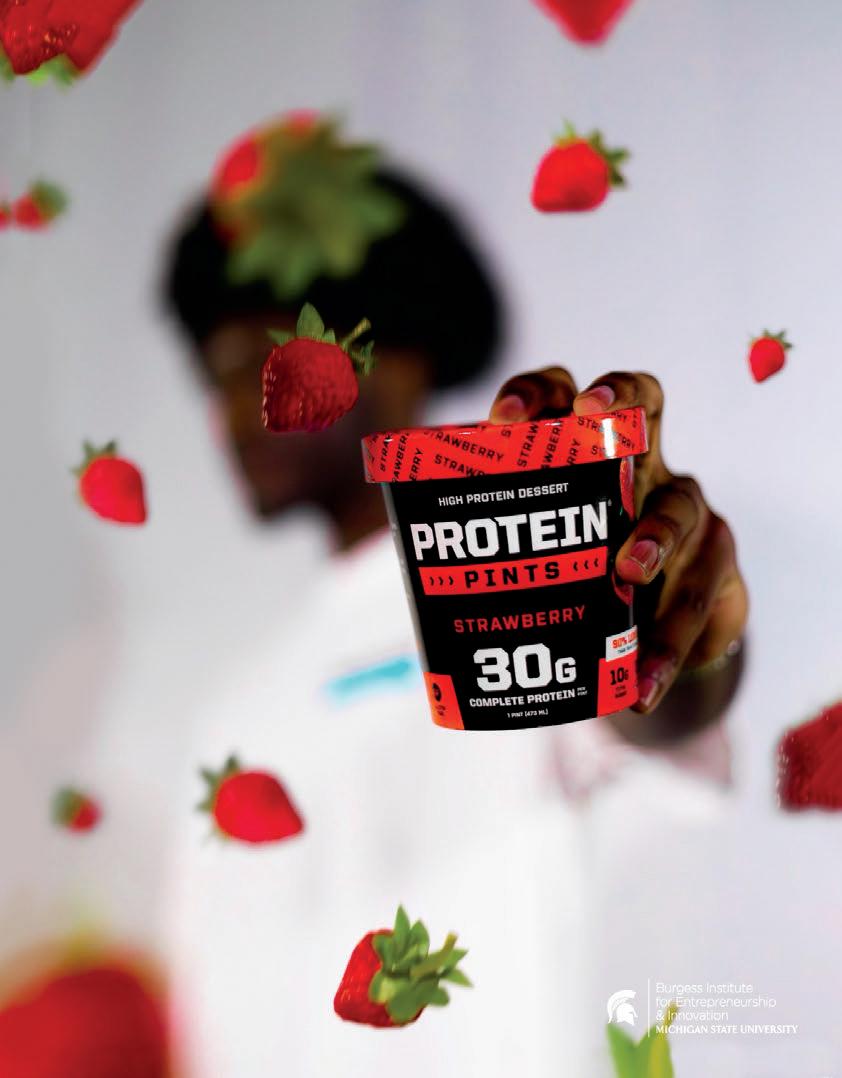








Alaina Georgopoulos
Alaina Nofar
Alexis Schmidt
Amrita Rajkumar
Anna Milnes
Annaliese Boglione
Arshiya Jain
Arzoo Chhaya
Ashley Edmonds
Auynha Smith
Avery Gibb
Brianna Schmidt
Brooke Behaylo
Carter Thornburgh
Cassandra Gilmer
Cassidy Devergilio Chloe Cox
Chloe Halverson
Claire Plaskey
Clara Carvalho
Clare Miller
Donovan Dennis
Dowon Song
Dylan McCracken
Elyssa Haddad
Emily House
Emma Anderson
Emma Conwell
Enna Fretz
Evie Ansari
Fatima Montanez
Fatou Dieng
Grace Dejong
Grace DeLano
Grace Laird
Grace Lowell
Grace McDermott
Hailey Allmand
Haley Butkovich
Isabel Fabiano
Jacie Rish
Jacie Walden
Jacqueline Maleson
Jade Lilly
Jake Klein
James Werner
Jenna Driscoll
Jillian Whitley
Josephine Deveau
Julie Bedford
Kathleen Loria
Kathleen Mulhearn
Kierra Polizzi
Lana Nehme
Lauren Ergelic
Lauren Golden
Lauren Muller
Lauren Tuohy
Leah Talerico
Lena Banat
Lula Karakitsos
Lydia Denton
Maddie Santoro
Madeleine Bamberg
Madeline Patterson
Marrianna Cruz
Megan Howarth
Micaela Proefrock
Nadine Jennings
Navya Abraham
Nicole Silarski
Olivia Gamelin
Rachel Smilanic
Raleigh Hoenstine
Ross Feldpausch
Sabreena Klann
Samantha Santoliquido
Sandra Lauren Platt
Sara Lusky
Sarah Fleming
Sarah Ryan
Shahad Almoayyad
Shaunna Bining
Sofia Camacho
Sofia Poulos
Srishti Kumar
Storm Williams
Susan Doolittle
Tara Cole
Taylor Nadjarian
Tess Reid
Victoria Klimowski
Victoria Reynolds
Yasmeen Khanfar
Zane Slanger-Grant
Zaynah Arja
Assistant To The
Milcah Solomon
Film Directors: Kaya Chamberlain, Megan Lear & Madi Hood
Art Director: Sabrina Seldon
Assistant Art Director: Gracie McClure
Art Team: Marissa Malleck, Kira Vance, Julia Clemens, Caroline Parthum, Bailey Maloney, Nia Kalinovic, Harrison Sanders, Sophie Champion, Jillian Moreno, Morgan Tschetter, Julius Patto, Hayden Miller & Liz Ciaramellano
Advertising Directors: Ruby Stewart & Liv Ceithaml
Assistant Advertising Directors: Gabrielle Clark & Emily Cassetti
Advertising Team: Haley Burton, Ellie Vasbinder, Sidney Ornstein, Emma Williams, Lana Nehme, Sophie Abejean
Abigail O’Connor & Zachary Robinson
Blog & Podcast Director: Gia Economopoulos & Kathleen Mahoney
Assistant Blog & Podcast Director: Zoe Komar
Blog & Podcast Team: Edvige Spizzirri, Jayden Vann, Olivia Ogle, Meghan Valade, Maura Shine, Emma Fick & Bella Johnson
Board of Diversity & Inclusion Director: Natasha Patel
Assistant Diversity & Inclusion Directors: Yazan Zalmout & Paris Carter Diversity & Inclusion Team: Laasya Koduri, Katharine Higgins, Maria Duris, Autumn Cottrell, Safiya Fareed, Maia McGillis, Pateel Basmajian, Fatou Dieng, Victoria Adebayo, Arianne Cabeje & Joan Kim
Creative Directors: Kate Blaszkiewicz & Milan Lazovski
Assistant Creative Directors: Vanessa Yousif & Katie Mulhearn
Creative Beauty Directors: Madison Girodat, Evan Yalowitz & Ateeyah Abdul-Wasi
Creative Beauty Team: Ali Baumgartner, Camilla Bello, Autumn Decker, Lilly Pilat, Emily Burke, Ani Krawczuk, Emma White & Lauren Davis
Copy Editing Directors: Hannah Young & Molly Melnick
Assistant Copy Editing Directors: Bella Short & Madeline Bist
Copy Editing Team: Claire Donohoe, Georgia Hill, Cleo Vollstedt & Stella Govitz
Events Director: Caitlyn Cieslik
Assistant Events Directors: Abby Sparkman & Riley Lingerfelt
Events Team: Allison Hawkins, Navya Abraham, Emma Neumann, Anika Patel & Margaret Gauss
Fashion Directors: Justice Seay, Brandon Roberts, Amy Chong & Kelsey Lester
Assistant Fashion Directors: Lily Stroup & Halina Newland
Fashion Team: Ava Fawcett, Celeste Roberts, Tessa Woolever, Marta Vaitkaitis, Michael Barfield, Ella Chamberlain, Dylan Howell & Evie Shadoff
Fashion Relations Directors: Bailey Beauchamp, Bella Finnigan & Carlina Pitello
Assistant Fashion Relations Director: Zoe Jansen
Fashion Relations Team: Alejandra Cevallos, Josie Deveau, Emily Tremewan, Maria Otrisi, Callyn Brown, Logan Neaton & Emma Baran
Assistant Film Directors: Parker Beavens & Antonio Dimovski
Film Team: Kyle Johnson, Danielle Polak, Abby Nellis, Riya Patchava, Evie Ansari, Yubin Lee, Cornelia Ovren, Griffin Lantz, KJ Thornton, Alice Walsh, Isabel Feeley
Finance Directors: Fiona Braja & Shreya Peddi
Assistant Finance Directors: Denise Grigorov & Sofia Mukhtar
Finance Team: Ananya Jagota, Esha Varchasvi, Abby Drueke, Henry Meloche, Ava Schulz, Clare Miller
Graphic Design Directors: Avery Antal & Sofia Diaz
Graphic Design Assistant Director: Savannah VerHage
Graphic Design Team: Kiana May, Joseph Jones, McKenna Long
Health & Beauty Directors: Lane Pruban & Peggy Smith
Health & Beauty Assistant: Victoria Klimowski
Health & Beauty Team: Hajer Alsalman, Laura Stephen, Abigail Jones, Bhavya Thotakura, Kellie Krueger, Sofia Poulos, Andy Gucciardo & Teny Topouzian
Lifestyle Directors: Kari Eickholdt & Maggie Scheff
Lifestyle Assistant Director: Grace Oluwole
Lifestyle Team: Caesar Roundtree, Ana Sullivan, Bella Crociata, Ashley Grifka, Molly McGrath, Gracie Sink, Nina Cascardo, Maeve Mariano, Isabelle Chauny & Dylan Shoenfeld
Marketing Directors: Julia Tatone, Maya Abbasi & Riya Patel
Assistant Marketing Directors: Allie Thomas & Lea Tsalis
Marketing Team: Raha Ohadi, Ella Couture, Toni Vizachero, Megha Bhatia, Shealee King, Samantha Kitchen, Esperanza Nunez, Maria Perales, Marella Pezza, Ruhani Singh & Avery Jordan
Photography Directors: Bella Lee & Audrey Richardson
Photography Assistant Directors: Amanda Lada & Megan Rabaut
Photography Team: Megan Basile, Emma Conwell, Trina Fiebig, Sophia Fonte, August James, Olivia Jordahl, Maya Kolton, Andrew Li, Bella Ngo, Alexis Schmidt, Brianna Schmidt, Aastha Singh, Kimberly Sy, Karina Stankowski & Natalie Vezina
Public Relations Directors: Kaitlyn Keele & Gabriella Lopez
Assistant Public Relations Director: Olivia Thaler
Public Relations Team: Sophie Nunez, Sarah Helling, Darien McEnroe, Riley Stebbins, Natalie Carlisi, Sophia Chung, Amanda Vogel & Laxmi Cspur
Student Relations Directors: Chloe Marcou & Jackson Tucker
Student Relations Team: Alaina Nofar, Lucy Stoy, Lex Hall-Bacon, Sofia Leone, Alayna Bryant & Krysteen Nguyen
Social Media Directors: Morgan Cornillie & Natalie Lopez
Assistant Social Media Director: Kalila Grant
Social Media Team: Amelia Zeitlin, Reagan Scharlach, Alexis Alore, Catherine Keller, Cecelia Nicholson, Claire Plaskey, Grace Preslock, Kaitlin Martin, Krisha Mirchandani, Olivia Langley, Olivia Bloom & Sydni Pieczarka
UX Directors: Megan Gleason & Neha Gurung
UX Team: Jenna Salhab, Amelia Kenny, Mikel Riffrani, Vivian Ng, Nadia Theders, Ryon Baldwin-Williams & Aashi Sharma
Founders: Kerry Chereskin, Lauren Christopherson & Julie Christopherson


Welcome back! Join us as we explore our Spring ‘24 edition together.
The spring semester signifies a period of renewal, where students cultivate fresh ideas and prepare to bloom into their full potential.
In this issue, we recognize the final projects of our VIM seniors and the new beginnings for our underclassmen. While we are so excited to share this project with you, as the editors, there’s a hint of sadness knowing it will be our final one. We want to sincerely thank all the seniors whose hard work has fueled this issue—a touching goodbye to a shared passion and a project that excites our younger members.
This semester, we pushed the limits and expanded our magazine to new levels. For the first time ever; VIM has a Diversity, Equity and Inclusion spread, dedicated to highlighting hair care in the black community. Additionally, VIM recognizes our 2024 Spring Fashion Show, Dawn till Dusk.
On March 14th, the VIM Fashion Relations team sold out the annual fashion show at the Wharton Center, creating a two-year streak of sold-out shows. VIM highlighted 38 student designers and 125 student models in the show, once again breaking records for the organization. We are so proud of our VIM family for consistently setting new benchmarks for success.
At our biweekly meetings, members are provided with the opportunity to connect with professionals across the fashion, beauty and creative industries. This semester, we were fortunate to have speakers from Condé Nast, Nike, Paramount, Female Founder World, Topicals and a special panel featuring our very own VIM alum.
As Editors-in-Chief and seniors, we extend our heartfelt gratitude for the invaluable experiences VIM has afforded us throughout the past four years. We take immense pride in our 60 directors, 21 teams, and 200+ members. Guiding this exceptional, creative, and hardworking group has been a privilege. The saying “it’s the people that make the place” could not be more true when it comes to this organization. You, dear members, are the very essence of VIM, sculpting it into the thriving community it stands as today. We deeply appreciate your dedication and devotion; your contributions have exceeded all expectations. We look forward to seeing the milestones VIM achieves in the future and know that we will always be your number-one fans.
Signing off as your EICs, Morgan Barbat & Lily Champine

Style: Ella Chamberlain, Amy Chong
Glam: Camila Bello, Autumn Decker, Lilly Pilat
Style: Ella Chamberlain, Amy Chong
Photo: Amanda Lada
Glam: Camila Bello, Autumn Decker, Lilly Pilat
Photo: Amanda Lada
Words: Halina Newland
Words: Halina Newland
Models: Liz Ciaramellano, Sarah Simran Reddypogu, Morgan Wright
Spread Designer: Kira Vance
Models: Liz Ciaramellano, Sarah Simran Reddypogu, Morgan Wright
Spread Designer: Kira Vance


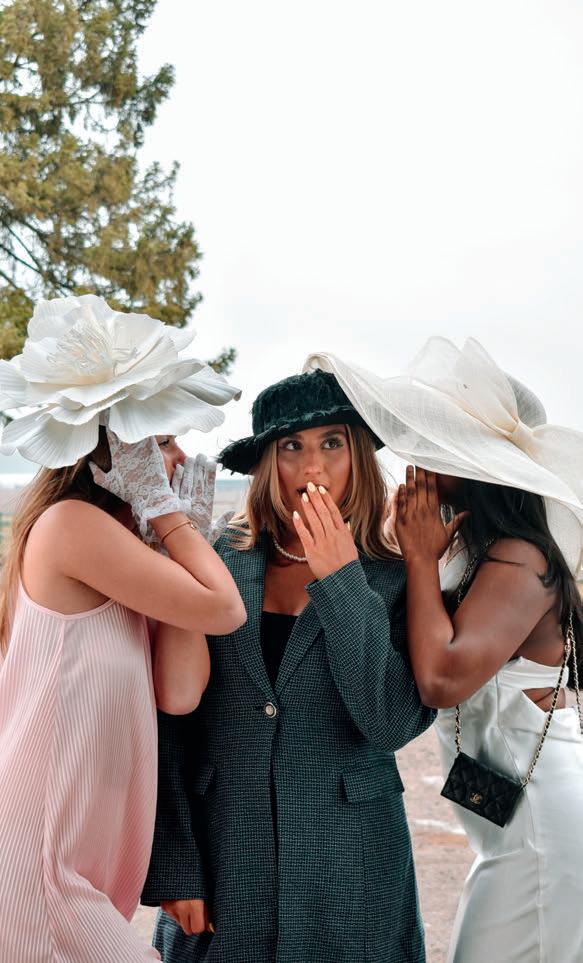







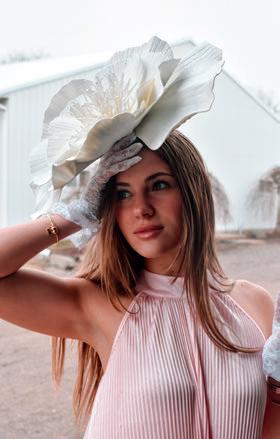
The term “derby” may seem insignificant to a sizable portion of the United States, but it’s a wholly different world in the South. Louisville, home of the famous Kentucky Derby continues to uphold its reputation by remaining a current annual hotspot. The Kentucky Derby is consistently used to host the top horse racing event of the year, and is world-renowned for its distinctive style. A lively two-week festival boasting various public events, concerts and contests is held before the derby, as is tradition. Customary influence plays an immense role in the unspoken dress code that’s required to attend.
The term “derby” may seem insignificant to a sizable portion of the United States, but it’s a wholly different world in the South. Louisville, home of the famous Kentucky Derby continues to uphold its reputation by remaining a current annual hotspot. The Kentucky Derby is consistently used to host the top horse racing event of the year, and is world-renowned for its distinctive style. A lively two-week festival boasting various public events, concerts and contests is held before the derby, as is tradition. Customary influence plays an immense role in the unspoken dress code that’s required to attend.
Individuals who have been criticized for dressing “too loudly” in their daily affairs would certainly find solace at the derby. Attendees are encouraged to wear their finest attire, with a strict emphasis on color, boldness and presentation. Dark, drab colors and shapeless clothing should be avoided at all costs, lest one be viewed as withdrawn, or even worse, shy! The Kentucky Derby is a highly social event, where guests fervently gossip and converse with their neighbors. Outfits sporting florals, brilliant fabrics and extravagant accessories will make one ever so popular at the derby. It is a true battle of fashion, and one’s ensemble is never complete without a dazzling headpiece to top it all off. An assortment of elegant headwear can be observed at the derby every year, no doubt purchased from local millineries. Bonnets, headbands, veils and custom fascinator hats are just a handful of the tasteful choices one would witness, should they attend the event. Undoubtedly, the Kentucky Derby is for the ages.

Individuals who have been criticized for dressing “too loudly” in their daily affairs would certainly find solace at the derby. Attendees are encouraged to wear their finest attire, with a strict emphasis on color, boldness and presentation. Dark, drab colors and shapeless clothing should be avoided at all costs, lest one be viewed as withdrawn, or even worse, shy! The Kentucky Derby is a highly social event, where guests fervently gossip and converse with their neighbors. Outfits sporting florals, brilliant fabrics and extravagant accessories will make one ever so popular at the derby. It is a true battle of fashion, and one’s ensemble is never complete without a dazzling headpiece to top it all off. An assortment of elegant headwear can be observed at the derby every year, no doubt purchased from local millineries. Bonnets, headbands, veils and custom fascinator hats are just a handful of the tasteful choices one would witness, should they attend the event. Undoubtedly, the Kentucky Derby is for the ages.



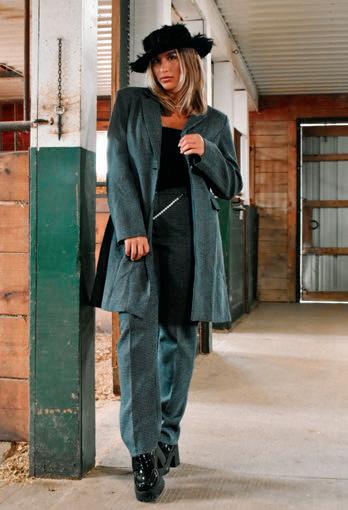


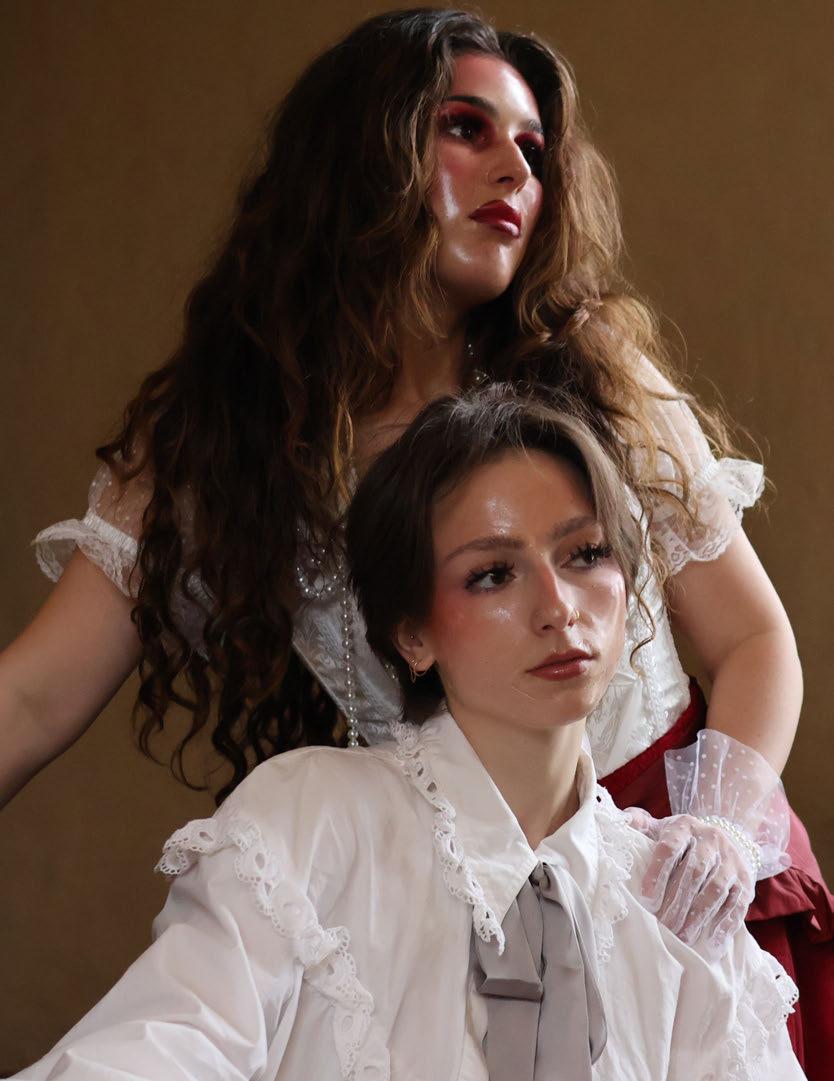


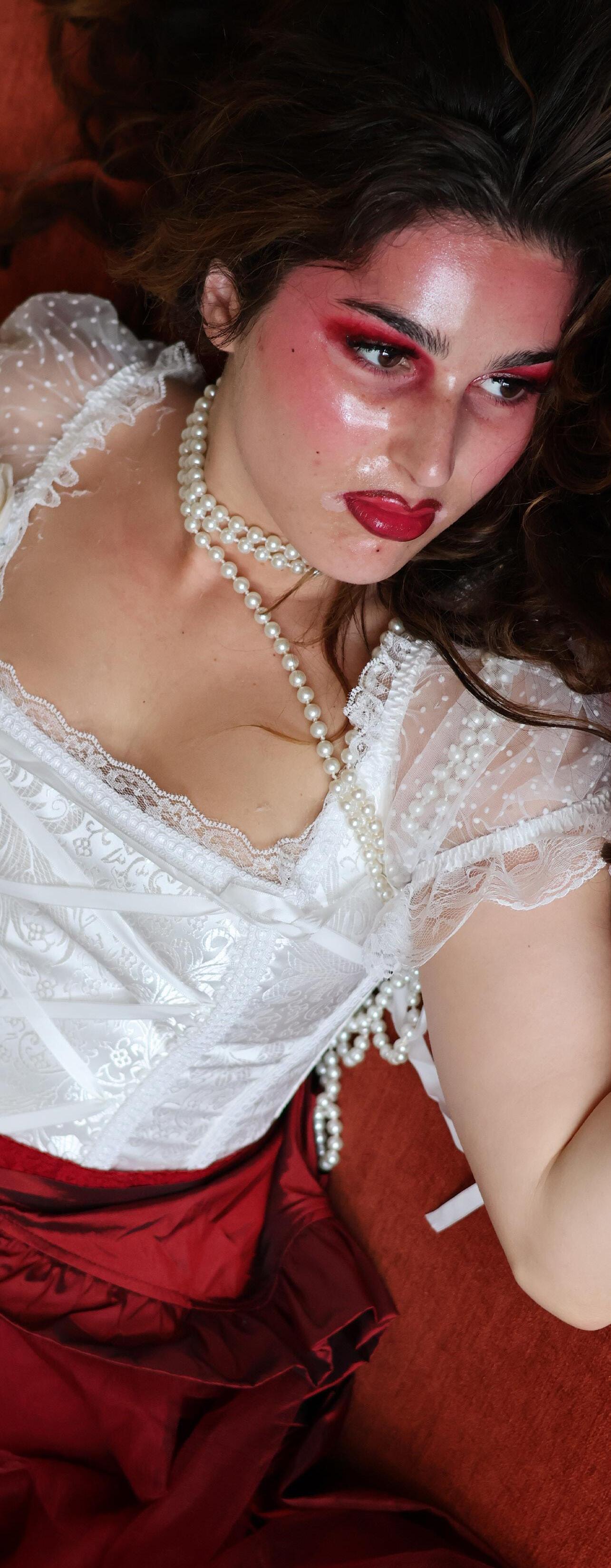


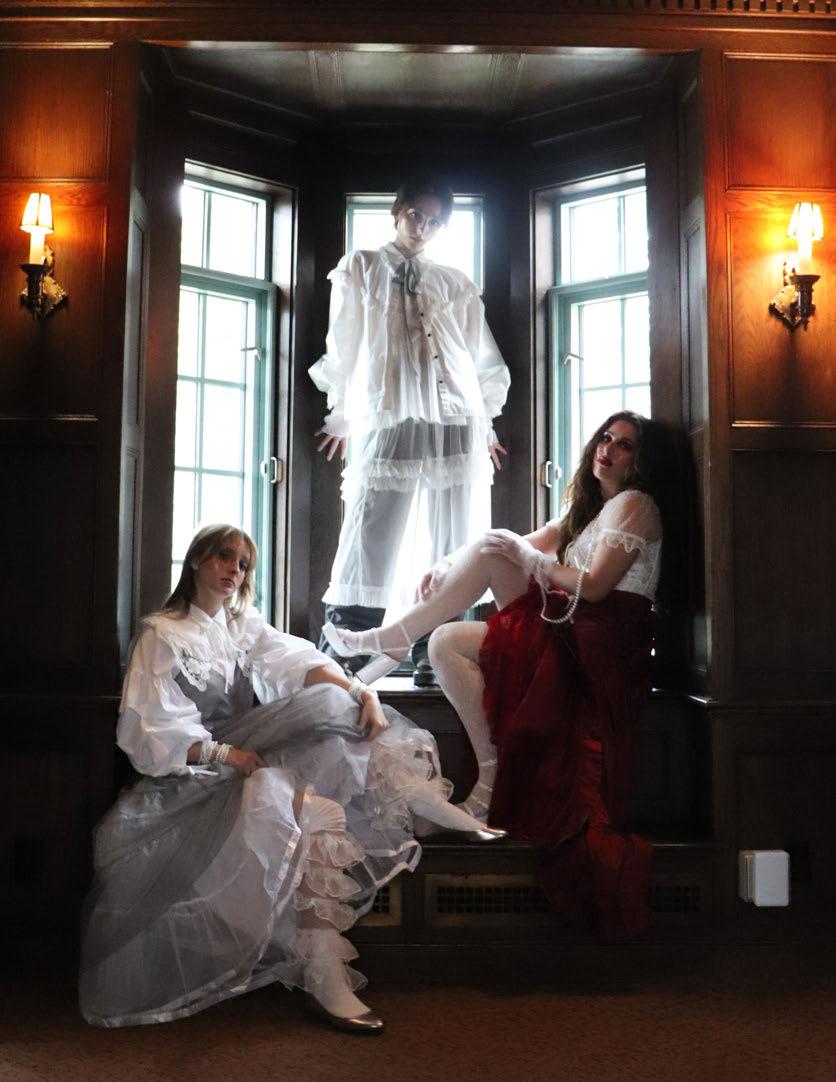 Photo: Megan Basile, Aastha Singh
Models: Bella Crociata, Emily Wozbut, Belle Hoke
Photo: Megan Basile, Aastha Singh
Models: Bella Crociata, Emily Wozbut, Belle Hoke


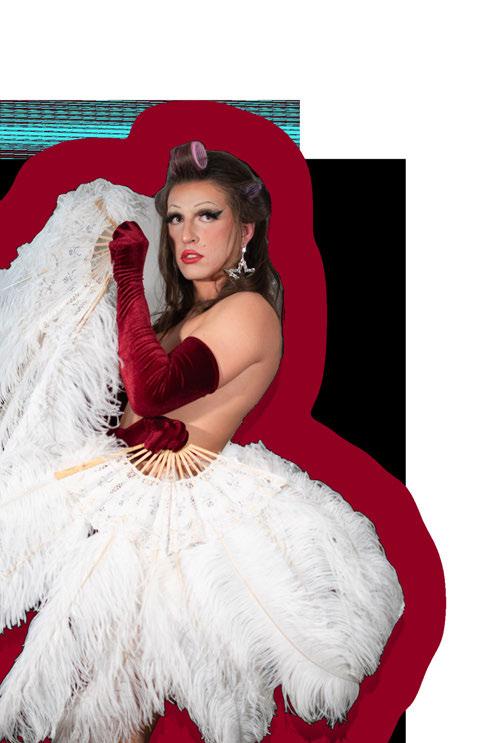

 Direction: Milan Lazovski
Glam: Emily Burke, Alison Baumgartner
Photo: Brianna Schmidt, Sophie Fonte
Models: Gino Sorrentino
Direction: Milan Lazovski
Glam: Emily Burke, Alison Baumgartner
Photo: Brianna Schmidt, Sophie Fonte
Models: Gino Sorrentino

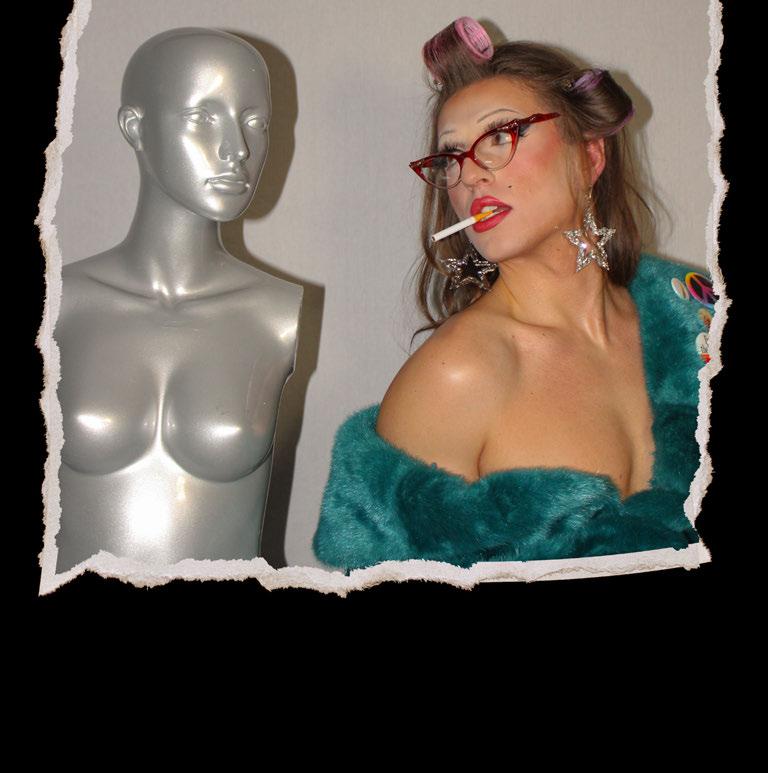



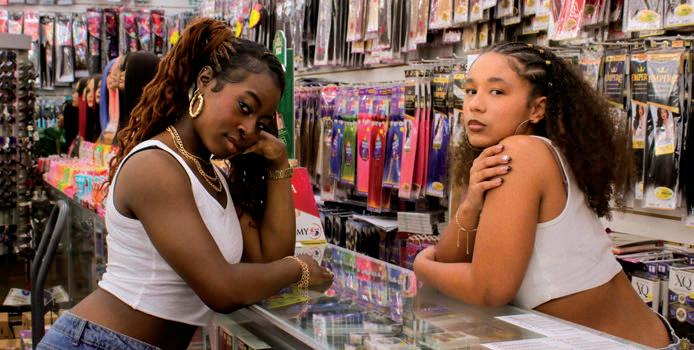


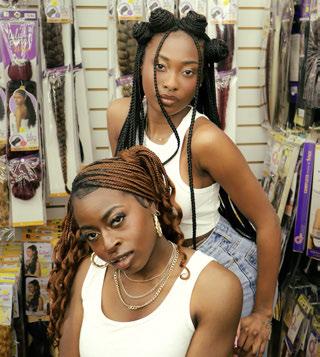 Style: Tasha Patel
Glam: Ateeyah Abdul-Wasi, Emily Burke
Photo: Aastha Singh, Megan Rabaut
Words: Paris Carter, Autumn Cottrell
Models: Deshawn Will, Victoria Adebayo, Paris Carter, Kirstyn Turner
Style: Tasha Patel
Glam: Ateeyah Abdul-Wasi, Emily Burke
Photo: Aastha Singh, Megan Rabaut
Words: Paris Carter, Autumn Cottrell
Models: Deshawn Will, Victoria Adebayo, Paris Carter, Kirstyn Turner
PULL. Twist. Braid. SNAP. Press. POP. Tug. SIZZLE. These are all sounds and moments associated with the grueling process of getting hair to a desired state through the many processes of hair care such as washing, blow-drying, silk-pressing, dyeing, box braiding, gluing or installing wigs and weaves. Whether standing in the mirror in admiration or woe, the question “what happened to my hair?” - is a harsh and alltoo-common reality for many Black people when it comes to hair care and styling.
Members of the Black community report complex feelings around their hair, with many having grown up without representation in the worlds of hair, fashion or beauty. Assistant Director of VIM DEI Paris Carter details her own experience, saying, “I was constantly told by my white counterparts that I should straighten my hair because it was ‘prettier’ that way. I also lacked Black representation, not only in my own community, but in the media I viewed. White beauty standards have been depicted as the standard for too long.”
To wear natural hair as a person of color remains an uphill battle. Unfortunately, many professional hair stylists lack knowledge regarding Black hair care and styling. Through bullying, media representation, and beauty standards Black children are often made to feel as though their natural hair is “ugly” or “weird” which discourages them from embracing it. These incidents occur at pivotal points of development when acceptance from peers feels key. Children are most vulnerable to this emotional burden, which makes the cultural education of white children and the eradication of ignorance a societal responsibility all around.

To wear natural hair as a person of color remains an uphill battle. Unfortunately, many professional hair stylists lack knowledge regarding Black hair care and styling. Through bullying, media representation, and beauty standards Black children are often made to feel as though their natural hair is “ugly” or “weird” which discourages them from embracing it. These incidents occur at pivotal points of development when acceptance from peers feels key. Children are most vulnerable to this emotional burden, which makes the cultural education of white children and the eradication of ignorance a societal responsibility all around. Children are most vulnerable to this emotional burden, which makes the cultural education of white children and the eradication of ignorance a societal responsibility all around.

Even after finding courage to do their natural hair, Black communities face the challenge of finding the right hair products. For Michigan State University students, one of the closest beauty supply stores is Luxe, a shop located 15 minutes off campus and out of reach for many Black students. Fortunately, a Creational Hair Collection vending machine–which allows students access to products like hair gel, extension packs, bonnets and durag caps–opened last spring in the Brody neighborhood. This is a start to making Black hair care products more accessible, but remains an undercompensation for the omission of the Black hair products in stores and cities across the country.
While a good start, it’s not enough to only have access to hair care products. Education about these products is vital. Many Black people are uneducated on how to care for their hair due to the environment they grew up in and they face constant pressure to conform to unrealistic hair standards.
It is vital to have organizations devoted to natural hair care, like MSU’s student run organization, CurlFriends. This group focuses on the education and acceptance of natural hair, dedicating meetings to learning more about the necessary steps that must be taken to embrace and properly care for curls.
Despite the lack of beauty supplies nearby, organizations like CurlFriends and Creational Hair Collection’s vending machines work to provide the resources and knowledge for Black individuals to feel recognized by the beauty industry and foster a long overdue appreciation for the diverse natural textures of Black hair.
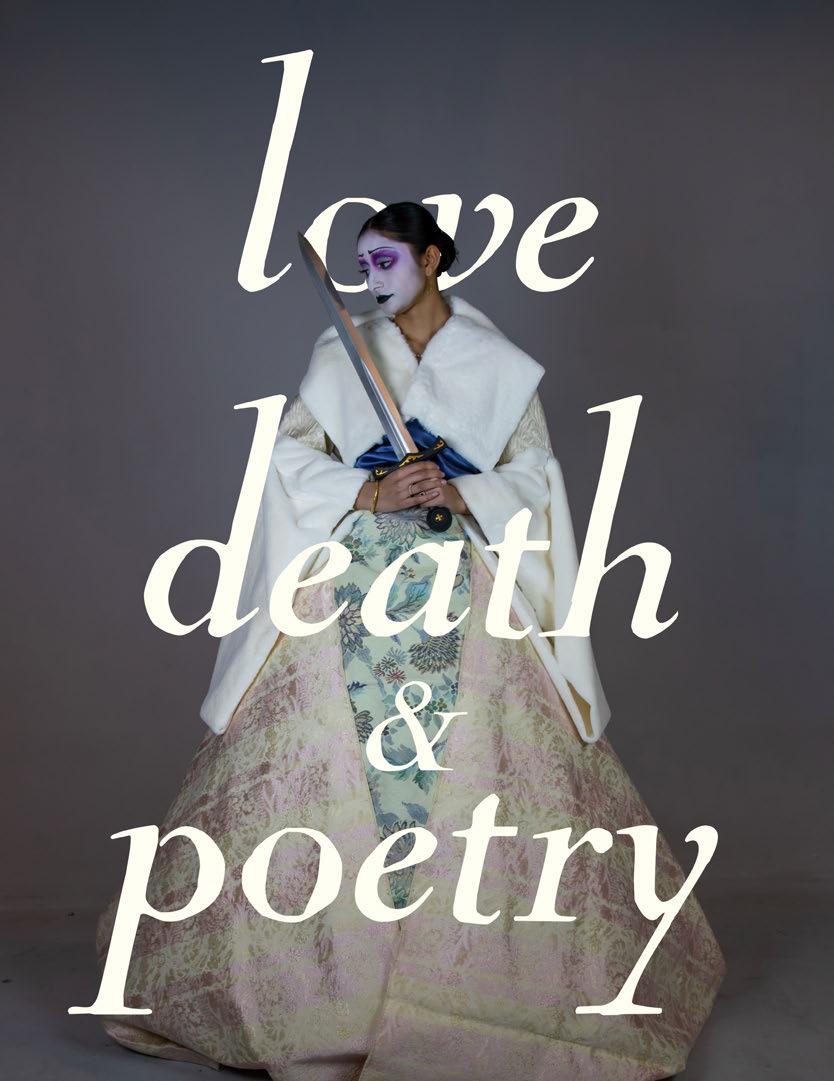
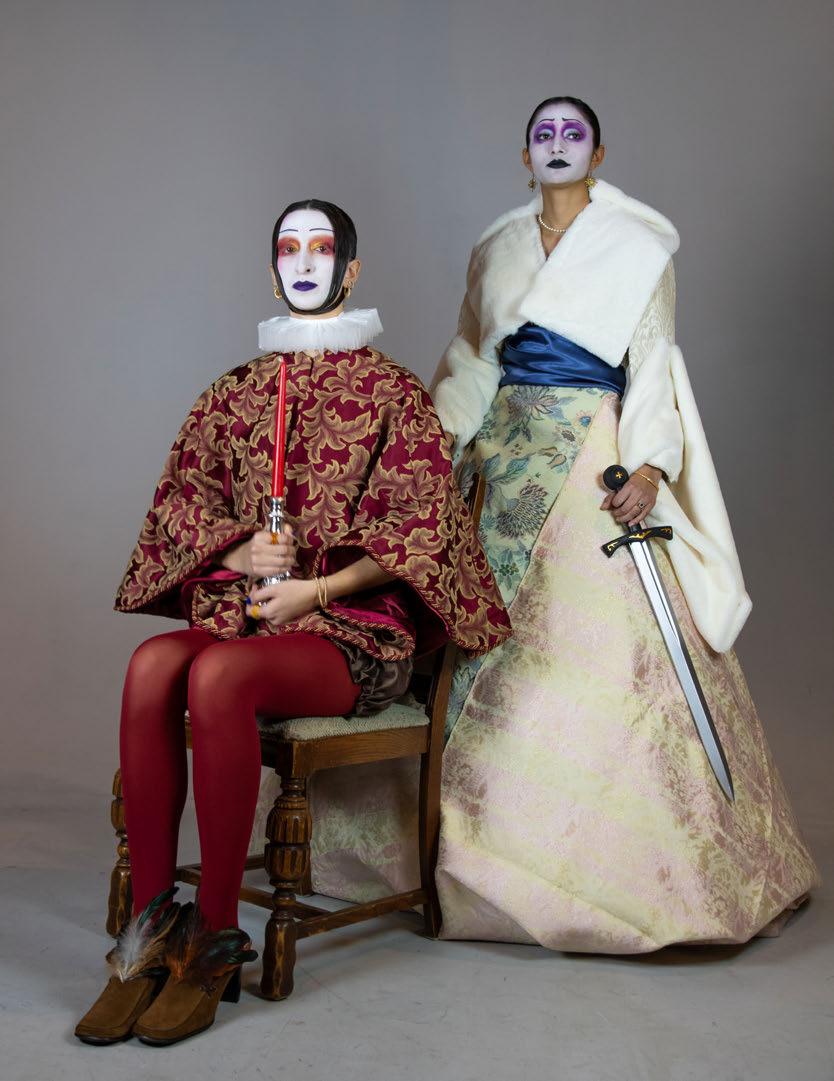


“Inspired by centuries of fashion muses, this season’s collection hopes to capture the essence of an old-world style still cemented in the minds of today’s youth.”
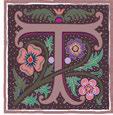
Three things plague the minds of those lost within a dream — love, death, and poetry. The modern world has long sought to interpret and integrate these themes, dating back over 500 years.
VIM predicts that fashion will look to the great lovers, writers and rulers of Europe’s past. Inspired by centuries of fashion muses, this season’s collection hopes to capture the essence of an old-world style still cemented in the minds of today’s youth. The fashions will showcase some of the most foundational elements of the elite dress in Europe during the 16th century, aiming to replicate a particular style in romanticism and mourning with touches of modernity woven throughout.
The first outfit, titled “Le Fantôme de Venise,” portrays the haunting presence of a Venetian duchess amidst the marble palazzos and canals of the famed Italian port city. The clothing is draped in an ensemble of warm tones such as fireweed, van dyke brown and Venetian gold, all meant to pay homage to the worn terracotta roofs and walkways. The cape, dyed blood-red with embroidery representing ivy growth, is similar to the papal mozzetta. The shorts are handmade. The red stockings, feathered lily-foot wedges and Elizabethan collar anchor the overall outfit within the fashion imagination of the Renaissance.
Daphné”, the outfit showcases a full skirt in contrasting fabrics, such as the woven floral motif of blooming carnations and oak leaves in blue, gray and muted yellow hues. The tailored suit jacket in a white brocade adds to the structured element of the outfit, and the added faux rabbit fur brings a touch of softness to the costume. The use of silk in a darkened Dutch tile blue works as a cummerbund to illuminate the whites of the fur and cinch in the waist to further extenuate the rigid clothing of the period.

The accessories echo luxury items procured by European royalty during the Renaissance. The skull replaces modern hardware such as a belt or jewelry, the sword held by our blue monarch stands as a symbol of the power she wields, and the antique sterling silver candlestick adorned with a toile red candle adds height to the haunting Venetian duchess. The worn, leatherbound book encapsulates the yearning of our womanly apparition for escape from this earthly realm as she goes mad, rereading the etched red lettering of the words “Love, Death and Poetry.”
The second outfit is one of great strength and melancholy, harkening to the tremendous female powers of France during the period. Titled “Île de Sainte
VIM magazine finds itself crossing over into a world understood only through the paintings and writings left to us by the masters of the time. While the silhouettes and makeup aimed to be placed within a period of rebirth, nobility and romance — there is an element of mystery present that allows us to compose a narrative and give the garments a life of their own. Love, death and poetry are not just human conditions often sought out by the people who least understand them, but rather a thread of wonderment that fashion sews into its most fabulous creations so it may genuinely live on in fiction.

 Style: Marta Vaitkaitis
Glam: Analise Krawczuk, Ateeyah Abdul-Wasi, Alison Baumgartner
Photo: Trina Fiebig, Olivia Jordahl Words: Dylan Howell Models: Rachel Smilanic, Nikitha Srikrishna
Style: Marta Vaitkaitis
Glam: Analise Krawczuk, Ateeyah Abdul-Wasi, Alison Baumgartner
Photo: Trina Fiebig, Olivia Jordahl Words: Dylan Howell Models: Rachel Smilanic, Nikitha Srikrishna
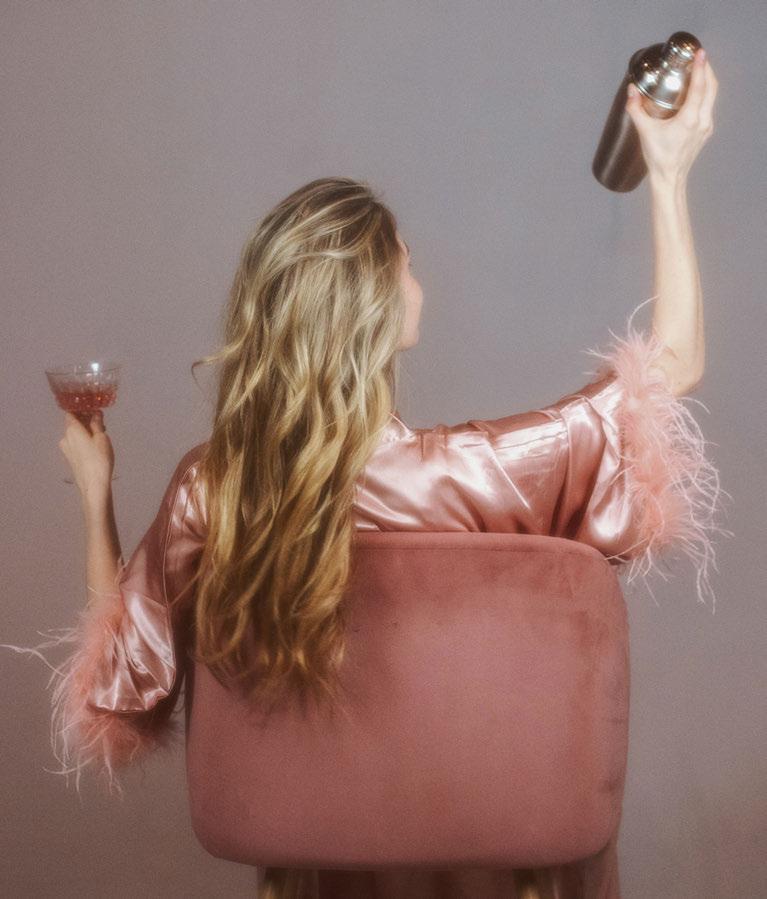
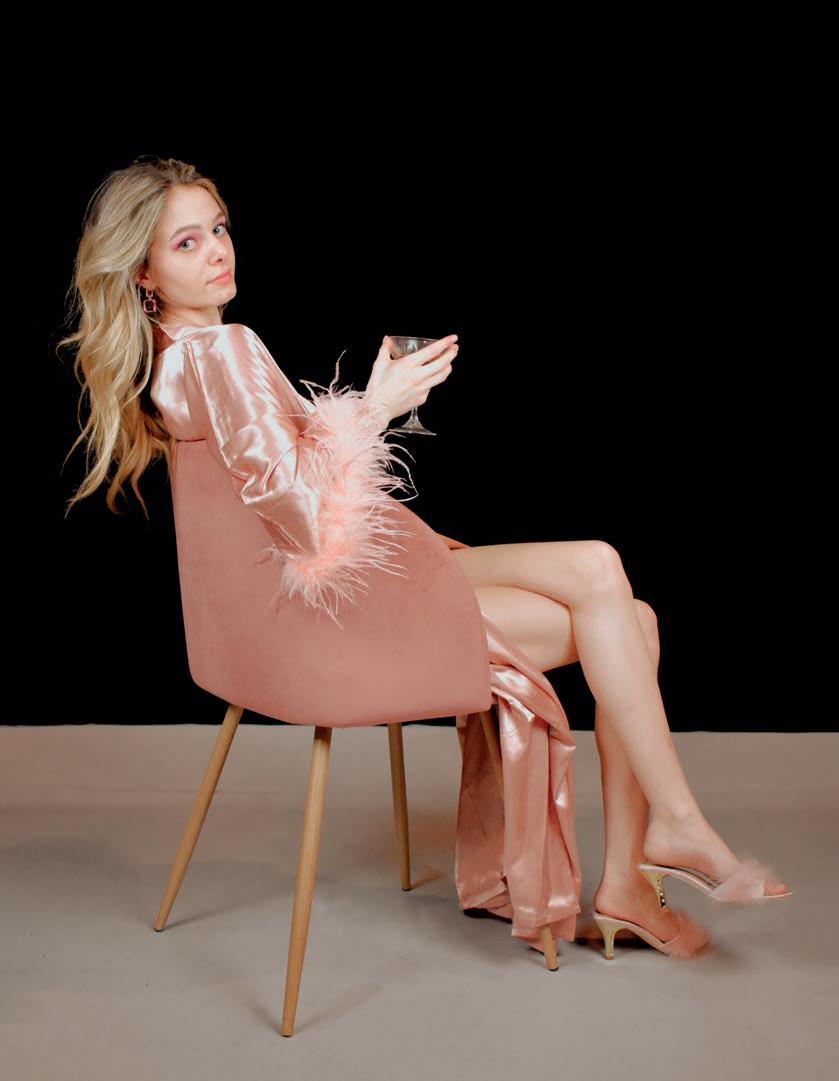 Style: Peggy Smith
Glam: Ateeyah Abdul-Wasi
Photo: Emma Conwell, Amanda Lada
Words: Peggy Smith Models: Ella Chamberlain
Style: Peggy Smith
Glam: Ateeyah Abdul-Wasi
Photo: Emma Conwell, Amanda Lada
Words: Peggy Smith Models: Ella Chamberlain

Boozy brunches, happy hours and Wine Wednesdays – it seems we will never run out of an excuse to have a drink… or a few too many. Alcohol consumption is regularly embraced as the norm. While there is nothing wrong with healthy drinking habits, constant overindulgence in alcoholic beverages is often treated as a rite of passage. Whether it’s a glass of wine each night or waiting to have a drink until the weekend, it’s sometimes hard to know when to stop. After two margaritas, why not make it a pitcher? The fleeting pleasure of overconsumption concludes with an achey, dehydrated and nauseous morning.
Year after year, college after college, drinking culture intensifies. However, Generation Z has grown increasingly aware of the dangers presented by past generations’ overconsumption. The rise of mocktails, sober nights, designated drivers and emphasis on clean living has taken the generation in a new and healthier direction. While binge drinking is still prevalent on college campuses and beyond, Generation Z has exposure to generations worth of alcoholism before them, possibly inspiring an understanding of the cycles of addiction. According to Virginia Commonwealth University, it is estimated that between 40% and 60% of developing an alcohol addiction stems from genetic factors. Looking into family health history can help inform future drinking decisions.
According to a study conducted by the Cleveland Clinic, 30% of students reported choosing sobriety, perhaps as a result of Gen Z’s attention to mental health. Even when garnished with a lime or cocktail umbrella, alcohol is still a depressant. Alcohol knocks neurotransmitters off balance, therefore affecting thoughts and behavior, and intensifying feelings of anxiety and depression. Furthermore, depressive disorders are often found in children – and even grandchildren – of those who have suffered with alcohol addiction, demonstrating the intergenerational transmission of mental health and addiction struggles.
Instead of turning to alcohol after a bad day, meet your new best friend: Mocktails. Mocktails
provide the indulgence of a fun drink without any of alcohol’s repercussions. From Dry January challenges, tips for the sober curious, to influencers populating feeds with fresh mocktail recipes, social media may also be behind Gen Z’s sobriety. Accessibility to professionals via the internet could’ve also inspired change in social norms. Peer pressure to “drink up” may continue to exist. However, now there’s a non-alcoholic alternative to raising a glass.
Curbing alcohol consumption offers undeniable physical benefits. Without the fog of alcohol, clarity and informed decisions can be made – usually providing a safer and less messy end to the night. The National Institute of Alcohol Abuse and Alcoholism discovered that of the almost 100,000 liver-related deaths in 2022, 46% of them were linked to alcohol abuse. By choosing sobriety or limiting drinks, the risk of liver disease, cancer and cardiovascular issues are reduced dramatically.
Gen Z may spend many hours online, but this has allowed for an awareness of the productivity sobriety presents. Social media trends portray influencers in their nights at home or partaking in “sober Saturdays,” allowing them to enjoy a “Sunday reset,” and setting their week off on the right note. Free from the lethargy often felt from alcohol consumption, people choosing sobriety are able to enjoy the next day without the hangover. This clarity can free weekends up to allow for new hobbies such as painting, writing, exercising or even just hanging out with friends.
In a world where excess is revered, it is refreshing to see a movement toward sobriety and a growing awareness of all of its benefits. The decrease in alcohol use, the rise of mocktails and a new direction toward health and wellness has younger generations on an alternative beneficial path. Breaking down multigenerational addiction and looking to our genetic pasts can lead us to a brighter future. So let us raise a mocktail glass to lives defined, not by the quantity of alcohol consumed, but by the quality of life lived. Cheers!





An homage to the shape-shifting silver screen goddess, Marlene Dietrich

 Direction: Milan Lazovski
Glam: Madison Girodat, Evan Yalowitz, Alison Baumgartner
Photo: Megan Rabaut, Bella Lee Models: Ava Hughes, Simon Phan, Andy Gucciardo
Direction: Milan Lazovski
Glam: Madison Girodat, Evan Yalowitz, Alison Baumgartner
Photo: Megan Rabaut, Bella Lee Models: Ava Hughes, Simon Phan, Andy Gucciardo
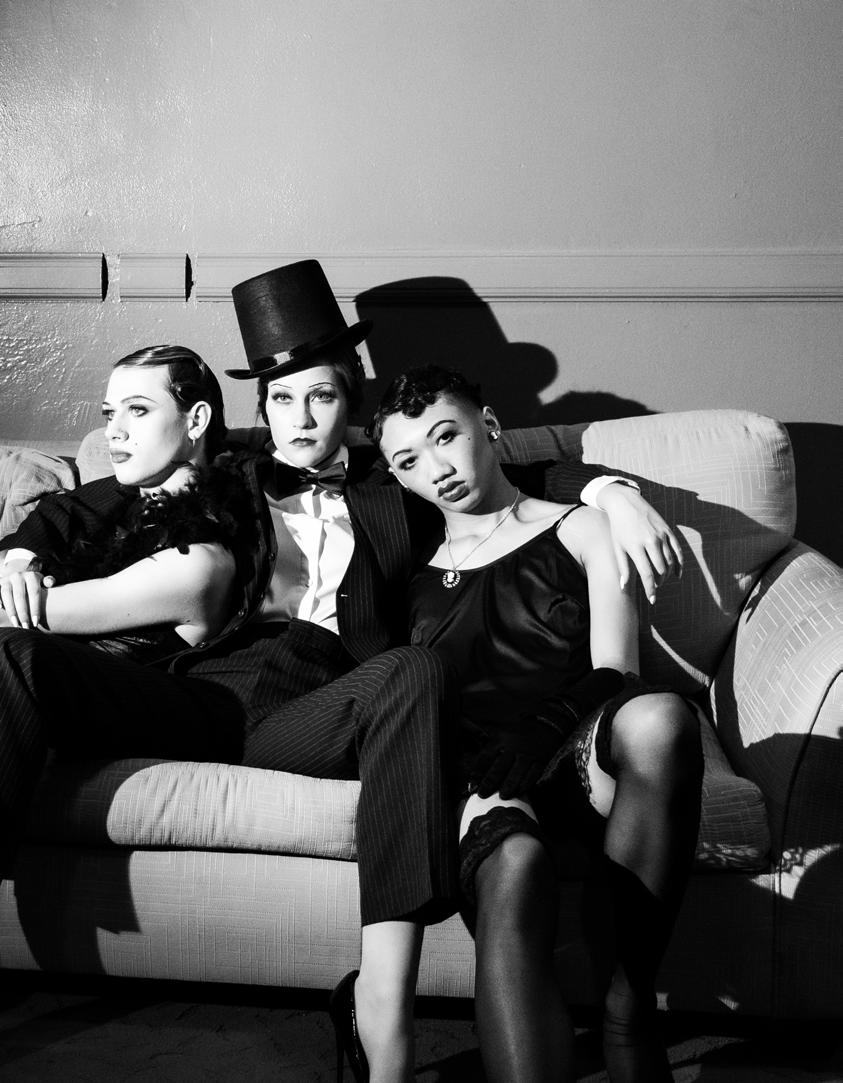
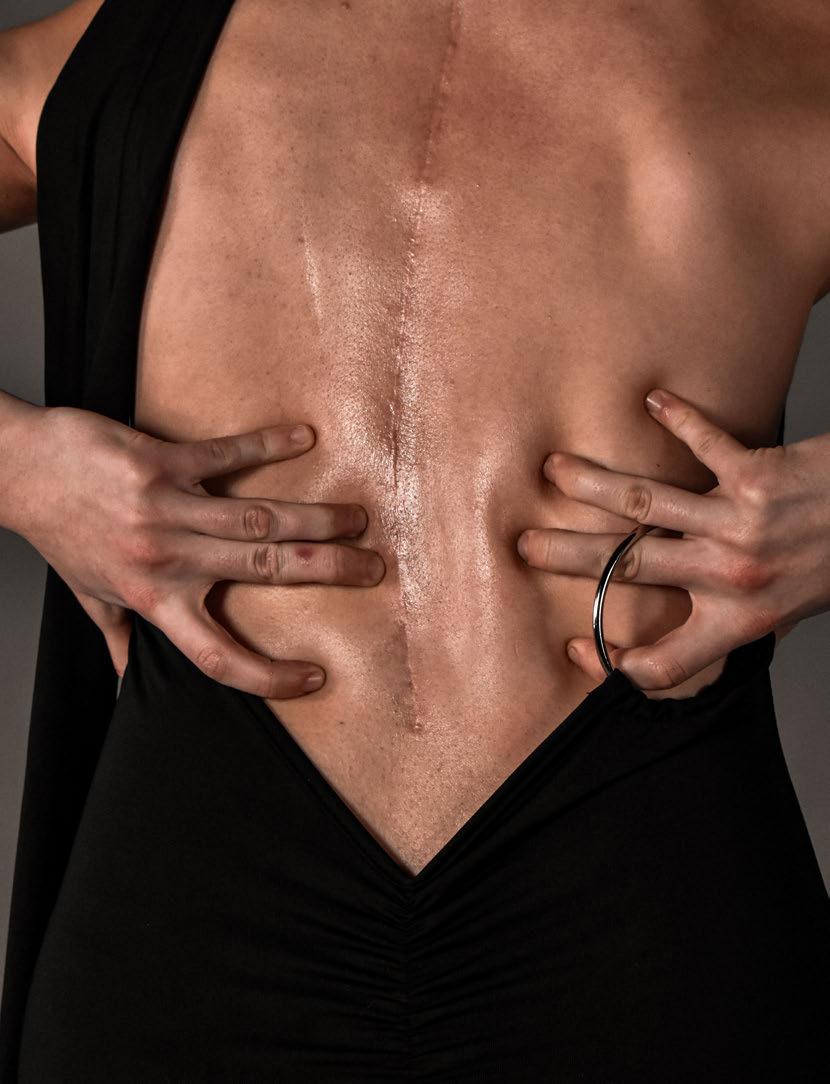
It’s said that a stance and posture reflect a state of mind. With the right posture, many feel instantly more graceful, tall and assertive. Standing up straight amplifies one’s figure, enhances an outfit, and radiates confidence. So why is it that more than 31 million Americans do not stand up straight?

 Style: Bhavya Thotakura
Glam: Analise Krawczuk
Photo: Amanda Lada, August James Words: Bhavya Thotakura
Style: Bhavya Thotakura
Glam: Analise Krawczuk
Photo: Amanda Lada, August James Words: Bhavya Thotakura
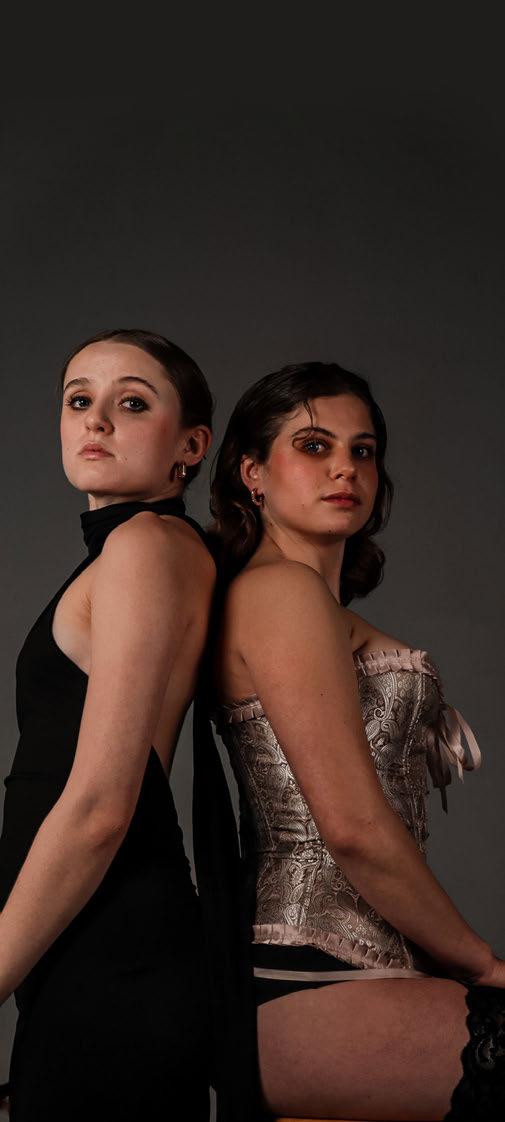
This epidemic of bad posture has significant outcomes on health, affecting balance, lung capacity, energy levels, blood pressure and bone and joint health. Bad posture not only stems from bad habits, but physical restrictions such as inflexible muscles and muscle strength which affect range of motion and balance as core muscles are unable to create a sturdy link between the upper and lower body. Spinal dysfunctions and joint degeneration result from severe postural imbalances. Additionally, while bad posture does not necessarily cause spine curvature, it can worsen conditions such as scoliosis.
From the late 19th century and into the 20th century, the United States deemed poor static and dynamic posture, not moving and moving respectively, as a bodily weakness demanding medical attention. Medical examinations of posture became more frequent in areas such as the military. Post World War I, a physically fit nation was thought crucial for national security. Subsequently, the importance of physical fitness and posture skyrocketed.
Different methods have been used historically to achieve healthy posture. The use of corsets
and the art of balancing books have been used for centuries to obtain ideal posture and figure. Studies have shown that corsets indeed improve lower back pain and increase muscle endurance for a short period of time. Since then, the interim movement toward improving posture awareness has died off, leading to unconscious habits in everyday routines, such as bending over the desktop, not stretching frequently and a lack of physical movement. Consciously or not, experiences with slow digestion, constipation and incontinence are all thought to be worsened by poor posture.
The idea of a “slouched body” was soon found unattractive and unhealthy as it did not project poise, confidence or dignity. Good posture is linked with high confidence and professionalism, considering body language plays a great role in communicating feelings and emotions. Expansive postures generally relay positive emotion, while closed off postures can portray feelings of depression and fatigue.
Hence, posture has the potential to influence the way you are perceived. In addition to the psychological implications, sitting straight up improves brain function and can enhance bodily performance and allows for calmer, more clarified thinking as lung capacity increases.
Following the rise of technology usage, the relevance of proper posture has seen a decline and an increased likelihood of slouching. While ergonomic efforts in furniture and devices have aided in reducing effects, bad posture remains an epidemic.


Physical education programs incorporating abdominal muscle exercises have become a new vogue. With newfound popularity in Pilates, Barre and Yoga, practices that engage core muscles and increase body flexibility, posture correction is possible. Achieving a mind-body connection through daily physical activity can be effective in addressing postural and mental health. Exercise is a long-term remedy toward improved posture. Good posture entails a neutral spine, bodyweight evenly distributed on both feet, chin parallel to the floor, shoulders rolled back, knees pointing straight ahead and firm abdominal muscles. Luckily, posture is fixable with mindful habits and reformative exercise. Remote technology now allows virtual trainers and videos to guide at-home stretches and exercises. Taking 30-60 minutes out of the day to devote to the body can better mental health and foster lifelong healthy posture. Training procedural memory aids in creating mindful habits that can notably improve quality of life. It’s not too late to start the journey towards a healthier body and lifestyle. The first step is to stand straight up.

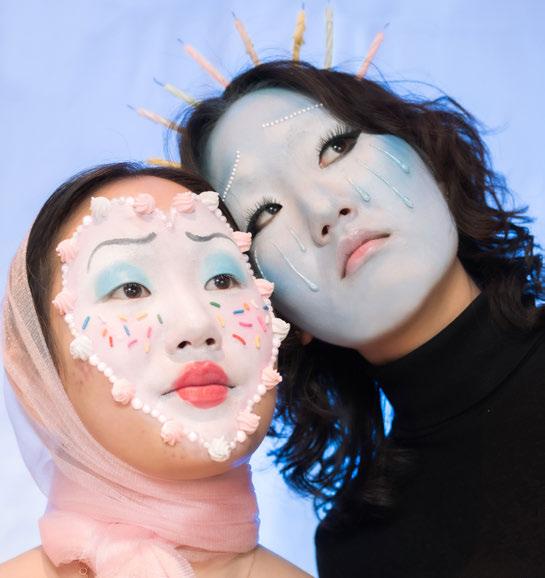
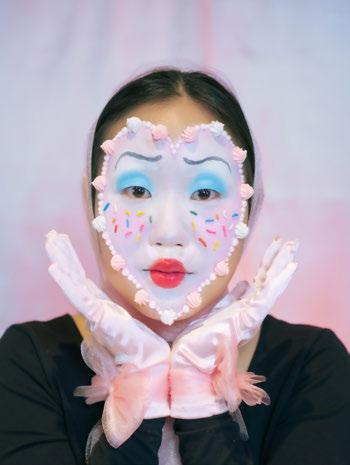
 Glam: Emily Burke, Ateeyah Abdul-Wasi
Photo: Karina Noelle Stankowski, Bella Lee
Models: Jaidyn Choi, Jisoo Choi
Glam: Emily Burke, Ateeyah Abdul-Wasi
Photo: Karina Noelle Stankowski, Bella Lee
Models: Jaidyn Choi, Jisoo Choi
In all of fashion history, one visionary is truly shocking—Elsa Schiaparelli. Although a household name for many, Schiaparelli’s style is far from ready-to-wear. An artist at heart, she campaigned for the blending of studio art, sewing rooms and by trusting her “not-so-good” sewing skills, she has been able to build one of the most revolutionary fashion brands in the world.
Like Schiaparelli was, many of us may be in this same boat. We love fashion but, we’d exhibit a deadpan expression if someone asked us to hem a skirt—only holding basic sewing skills; and a lot—a whole lot—of hot glue.
Thankfully, Schiaparelli gives us hope for this side of ourselves. Born in 1890, the Italian-native was a philosopher at heart. Her fascination for divine beings and the human mind led her to produce a volume of poems, “Arethusa,” which later was scrutinized by her parents and their aristocratic beliefs.
In an era defined by conformity, she dared to dream in vivid technicolor, infusing her creations with a whimsical charm. Schiaparelli studied philosophy at the University of Rome and later moved to Paris, where mystics and artists settled. However, due to times of war, Miss Schiaparelli moved to New York where she was a mere assistant at her husband’s psychology bureau.
Here, Schiaparelli began socializing with artists and designers who encouraged her to start her own fashion house. In 1927, her career really began.
After moving back to Paris, Schiaparelli started a knitwear line that was a huge success
due to the surrealist motives. Building a cohesive illusion in her styles helped her catch the attention of many celebrities interested in out-of-the-ordinary wear. Her designers appeared in Vogue, which helped her launch new lines like perfumes, bathing suits and skiwear.
Her business was one of the first where customers could enter and leave with an entire outfit, including shoes and accessories—which birthed the term “boutique.”

Eschewing the prevailing trends of the time, she embraced a daringly original aesthetic that drew inspiration from the surrealist movement that was sweeping across the artistic landscape. Her designs were a playful amalgamation of disparate elements—where dreams collided with reality, and the ordinary metamorphosed into the extraordinary.
One of her most iconic looks was made in her collaboration with Salvador Dalí. This collaboration spawned the infamous Lobster Dress. A testament to their shared love for the surreal, the dress featured a giant lobster emblazoned across the front. The claws extended in a way many said was “provocative.” A bold rebellion against the constraints of conventional femininity captured the attention of many men and women.
But Schiaparelli’s genius extended far beyond mere shock value; it lies in her ability to craft her designs with a profound sense of wit and intelligence. Her signature “Shocking Pink” became a staple
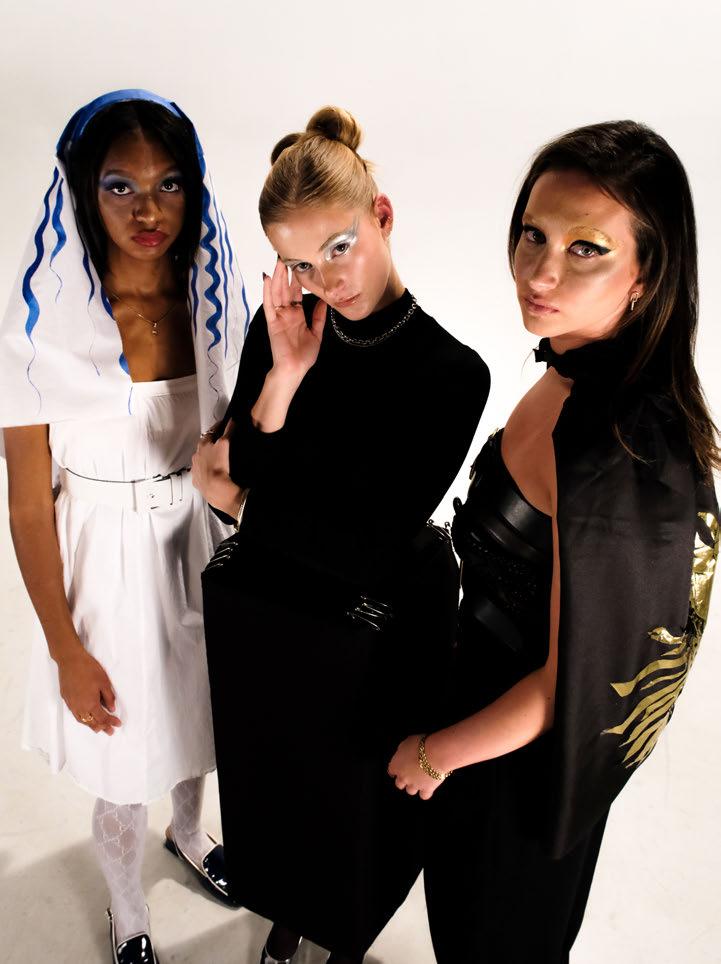
of her brand—a vibrant hue that exuded confidence and defiance in equal measure. Whether it adorned a sleek evening gown or a tailored jacket, Schiaparelli’s pink was a declaration of individuality, a rallying cry for women to embrace their power and agency. For all her irreverence, Schiaparelli was also a master technician—a couturier whose craftsmanship knew no bounds. She pioneered innovative techniques such as using decorative zippers and introduced the concept of the wrap dress long before it became a staple of modern fashion. Her attention to detail was meticulous, her cuts precise and her fabrics luxurious—a testament to her unwavering commitment to the industry.
Today, Elsa Schiaparelli’s influence can be felt in every corner of the
fashion world—from the creations of designers like John Galliano and Alexander McQueen to the avantgarde sensibilities of emerging talents pushing the boundaries. Her legacy is a nod to the power of imagination, the enduring allure of the surreal.
Let’s hope that in whatever skills we may or may not have, we can find security and confidence in ourselves regardless—just as Miss Schiaparelli did.
Style: Brandon Roberts, Celeste Roberts
Glam: Analise Krawczuk, Emma White, Lilly Pilat
Photo: Maya Kolton, Sophie Fonte
Words: Kelsey Lester
Models: Sarah Cavanaugh, Raegan Davis, Bella Vaughan
Spread Designer: Julia Clemens
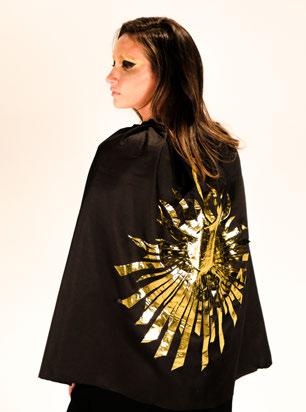
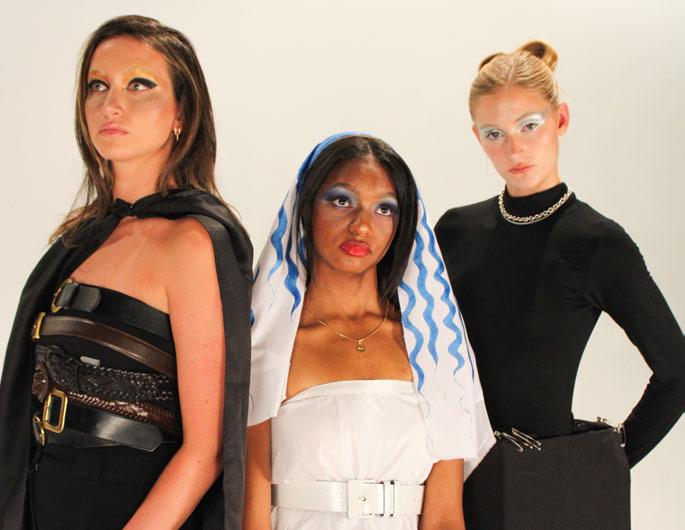
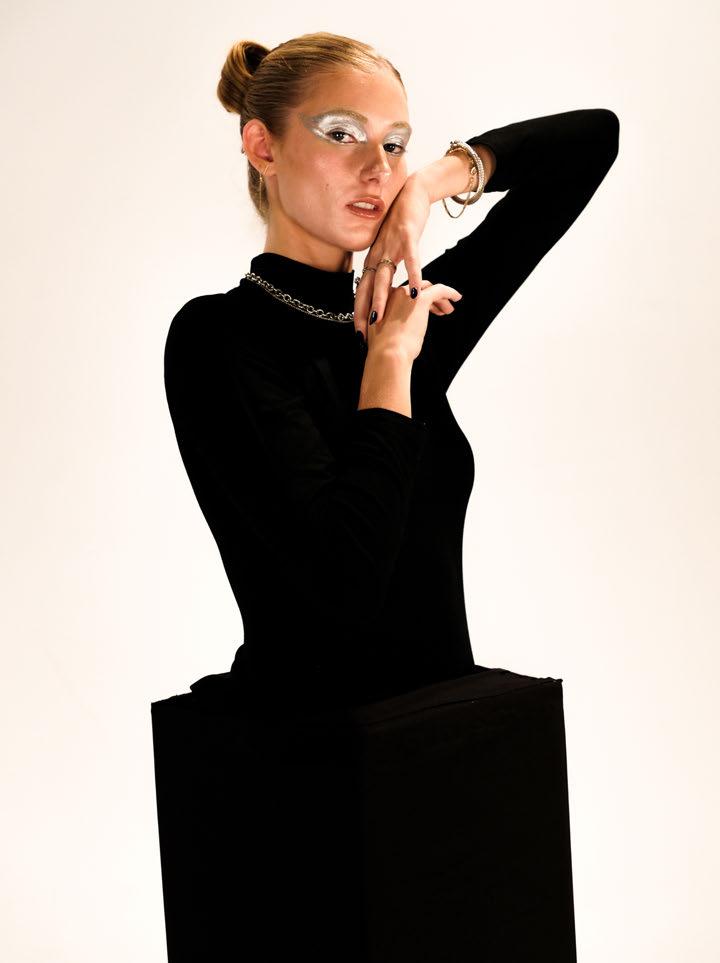

On March 14, 2024, VIM hosted their annual spring fashion show in the Pasant Theatre at MSU’s Wharton Center. The theme for this year’s show was Dawn Til Dusk, a mesmerizing journey from day to night that had the audience on the edge of their seats.
Divided into two distinct halves, the first portion of the show featured the ethereal light color palette that transported viewers into a whimsical daydream. As the lights dimmed and the beats of the music grew more intense, the second half of the show came alive with a sultry night vibe that captivated everyone in the theater.
Guided by the creative vision of Fashion Relations
Creative Director Bella Finnigan and her talented team, the show seamlessly intertwined the creations of 38 student designers with the dynamic energy of 125 student models. From extravagant evening gowns to
edgy streetwear, the diversity of styles showcased the immense talent of students from all corners of campus.
The audience was left in awe of the creativity and skill displayed on stage, proving once again that VIM is a powerhouse in nurturing young talent and pushing the boundaries of fashion. As the lights faded and the final applause filled the theater, it was clear that the future of fashion is in very capable hands.

The success of this entire show is a testament to the hard work and dedication of the VIM Fashion Relations Team. Led by business directors Carli Pitello and Bailey Beauchamp alongside creative director Bella Finnigan and assistant Zoe Jansen, this talented team truly made this event possible. Their vision, creativity, and teamwork brought this show to life, and without them, it would not have been the same.


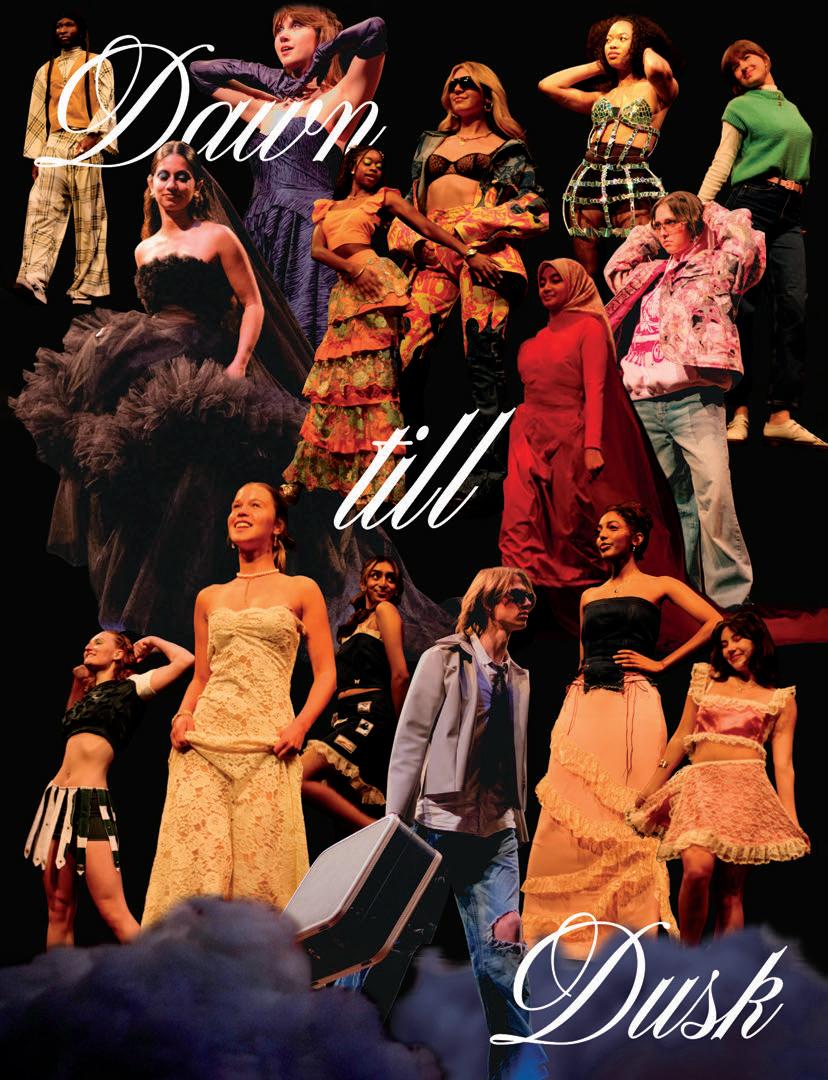


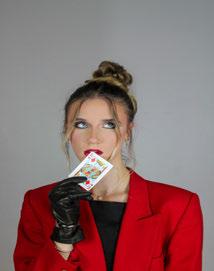






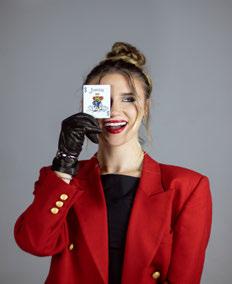












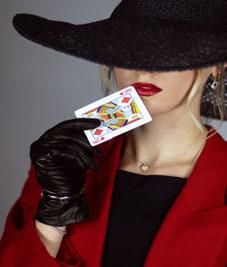

QQQ Q Q 5
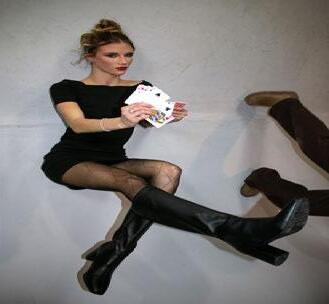




In the context of a card game, “following suit” can be viewed as a strategic move. However, beyond the Euchre showdown at family game night, “following suit” goes past etiquette and reaches a broader context of human behavior.
In the context of a card game, “following suit” can be viewed as a strategic move. However, beyond the Euchre showdown at family game night, “following suit” goes past etiquette and reaches a broader context of human behavior.
Since the dawn of time, humans have been born and bred to follow the leader. Whether it be lining up for school lunch, looking up to an older sibling, or attending a unifying political march, it is natural for humans to mimic others’ behavior. The desire for acceptance, the comfort of conformity and the pressures of environmental influences have created a culture of “following suit, exemplified in the psychology of “going with the crowd.”
Since the dawn of time, humans have been born and bred to follow the leader. Whether it be lining up for school lunch, looking up to an older sibling, or attending a unifying political march, it is natural for humans to mimic others’ behavior. The desire for acceptance, the comfort of conformity and the pressures of environmental influences have created a culture of “following suit, exemplified in the psychology of “going with the crowd.”
While often advantageous at the cards table, “following suit” can suffocate innovative ideas and personal goals. Herding provides safety in numbers, making individuality feel scary. However, going off on your own can bring self-discovery and promote adaptability. Rather than attending a guided art class, grab a canvas and some brushes and freestyle art that speaks to your heart.
While often advantageous at the cards table, “following suit” can suffocate innovative ideas and personal goals. Herding provides safety in numbers, making individuality feel scary. However, going off on your own can bring self-discovery and promote adaptability. Rather than attending a guided art class, grab a canvas and some brushes and freestyle art that speaks to your heart.
Often, following a leader or a group helps maintain a certain reputation and feelings of safety. That being said, interacting with new and diverse groups can foster a deeper understanding of others. Go to a cafe on your own. Chat with the person at the table next to you. Show up to your local run club solo. Pulling a wild card can be intimidating but worth it.
Often, following a leader or a group helps maintain a certain reputation and feelings of safety. That being said, interacting with new and diverse groups can foster a deeper understanding of others. Go to a cafe on your own. Chat with the person at the table next to you. Show up to your local run club solo. Pulling a wild card can be intimidating but worth it.
And while the road most traveled is paved and clear, it has been walked a million times for you. Marching to the beat of your own drum can allow for an independent, creative and new ownership of self. If you play your cards right, you can shuffle things up however you choose.
And while the road most traveled is paved and clear, it has been walked a million times for you. Marching to the beat of your own drum can allow for an independent, creative and new ownership of self. If you play your cards right, you can shuffle things up however you choose.
Style: Peggy Smith
Style: Peggy Smith
Glam: Lilly Pilat, Camila Bello
Glam: Lilly Pilat, Camila Bello
Photo: Emma Conwell, Bella Ngo
Photo: Emma Conwell, Bella Ngo
Words: Peggy Smith
Words: Peggy Smith
Models: Gianna Pehar
Models: Gianna Pehar
Spread Designer: Gracie McClure
Spread Designer: Gracie McClure

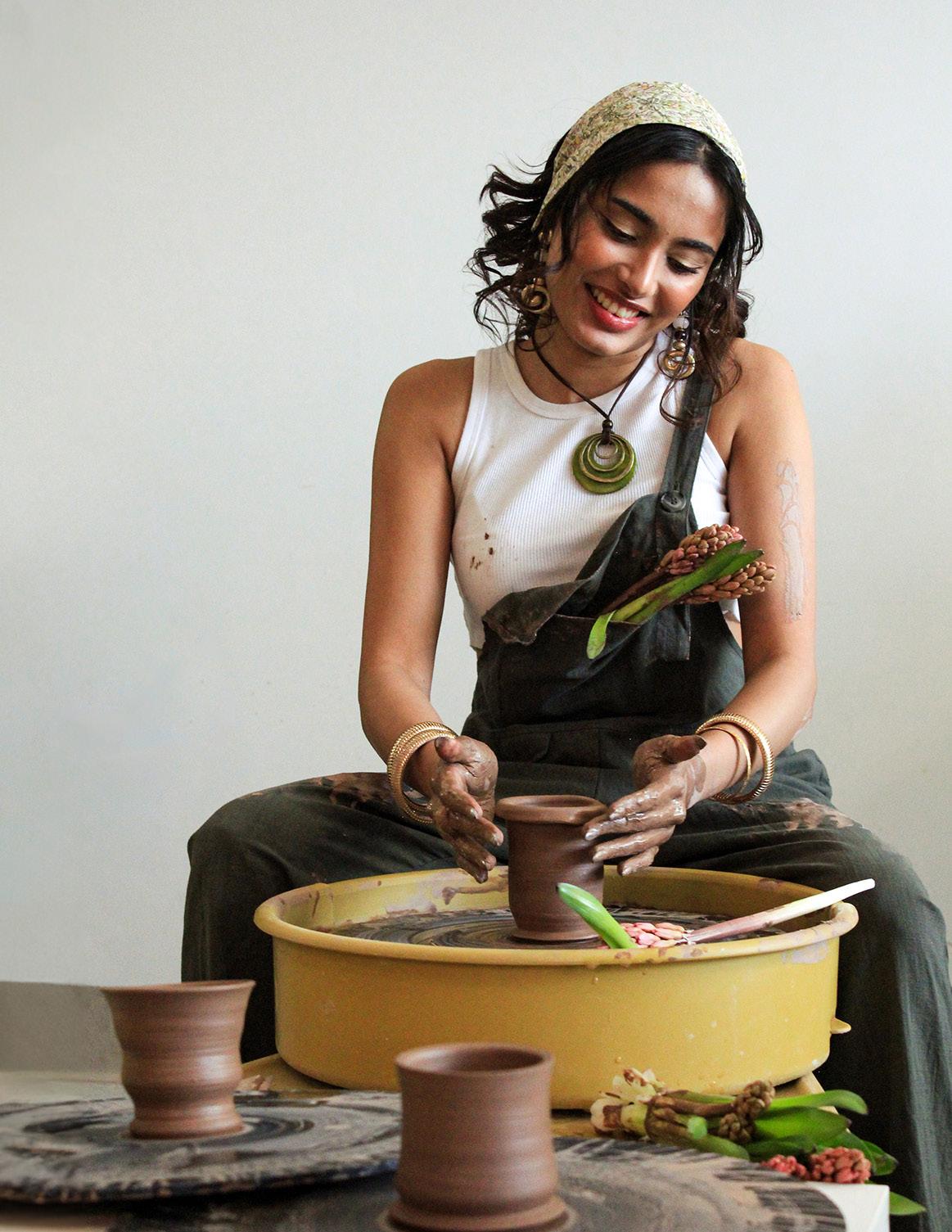


It’s about engaging with activities to make life more fulfilling–whatever that may look like. In order to live a truly gratifying life, it has been suggested that an individual needs only five hobbies: one to make money, one to maintain physical health, one for encouraging creativity, one to build knowledge and one to aid the evolution of one’s mindset. These five distinct categories cultivate a respective and unique sense of purpose and maximize life enrichment.



Finding a hobby with the potential to monetize for income helps enrich the entrepreneurial spirit. Whether it’s photography or consulting in an area of expertise, incorporating a hobby that makes money adds a practical dimension to any lifestyle and provides hobbyists with both enjoyment and additional income.

Physical health is another great place to start when looking for a new hobby. Going to the gym, trying out hot yoga and even dancing are all ways to enhance overall well–being and holistic health. Not only does movement strengthen the body, it also enhances mood and sharpens mental acuity. Additionally, exercise is a great stress reliever in conversations about mental health.

Creativity is fuel for the soul. A hobby that acts as an inventive outlet creates space for authentic self expression. Painting, writing, cooking and sewing are all great options to nurture a creative side and are equally beneficial in finding new ways to express feelings, thoughts and identity.

Knowledge is power. Taking time to read, learning a new language or even becoming a history buff in a specific subject will feed the mind and enhance personal experiences and perspectives. Utilizing a hobby to expand intellectual capacity is a fun way to spend time, but also an investment in hobbyists’ future selves.

Lastly, to truly evolve, unearthing a challenging hobby may be the missing link for a thriving life. This could involve practicing mindfulness, taking time to meditate or just trying something new that pushes the boundaries of learned comfort zones. Embracing feelings like discomfort and uncertainty makes an individual more resilient, and with resiliency comes more opportunity to grow.





the “art” of hobbying is less about finding activities to fill time and more about being intentional with practices that can guide the evolution of a hobbyist into their full potential. This journey of self-discovery and embracing these five different activities can be instrumental in the development of self, as a friend, coworker, family member and hobbyist alike.
Style: Bella Crociata, Nina Cascardo Glam: Autumn Decker Photo: Natalie Vezina, Alexis Schmidt Words: Bella Crociata, Nina Cascardo, Maeva Mariano Models: Mansi Paradkar

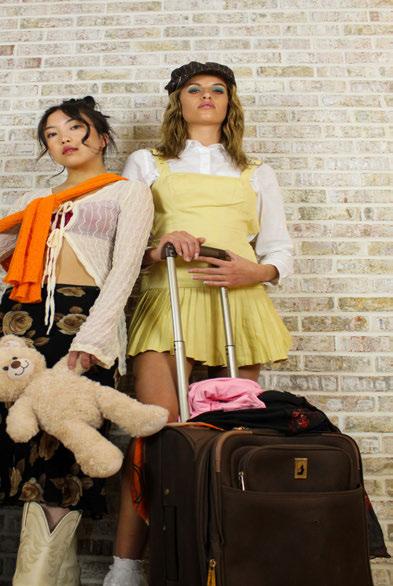
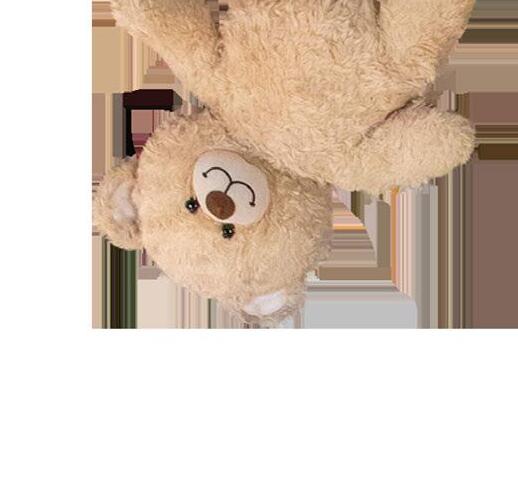

While leaving home often leads to new beginnings, it can also bring heightened amounts of anxiety for many. Being a college student inching towards graduation can result in a fear of the unknown, similar to the feelings incoming freshman may have felt when leaving the comfort of a childhood home, as well as friends and family behind. When starting a new journey, it is difficult to find comfort in the uncomfortable.

The feelings that come with moving to a college town and the fear that it may carry can be jarring. However, if you never allow yourself to experience new opportunities, you’ll never discover what you’re capable of. A nerve-wracking experience shouldn’t be viewed with an exclusively negative connotation.










Our minds try to protect us by anticipating possible negative outcomes, yet the narrative around feeling nervous about embarking on a new journey should be changed. As scary as it is, fear is a natural side-effect of life. This doesn’t mean it should dictate our actions, or stop us from taking risks. When facing a new experience like moving away, the best thing to do is accept that there will be some inevitable bumps along the way, and you will need to learn to forgive yourself for the mistakes you will make as you grow.
Life is about trial and error. While college may have started as a daunting place, for many seniors, being in college has given them a new sense of home and security. This is a place of opportunity in the shape of friends, activities, and social situations. It’s important to remember that at one point, everyone was a senior in highschool, feeling the fear that comes with the unknown of a new university. Yet they persevered and found their footing. Eventually, everyone falls into their niche.
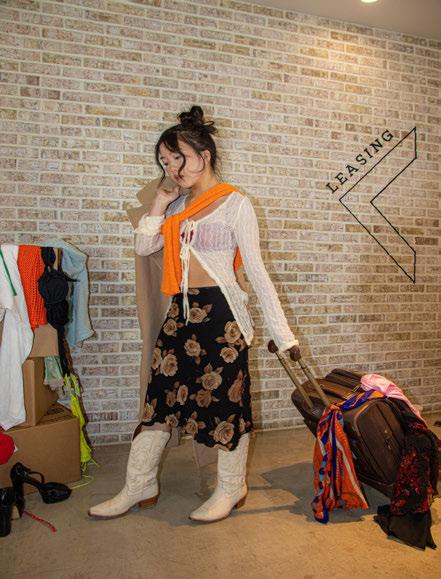

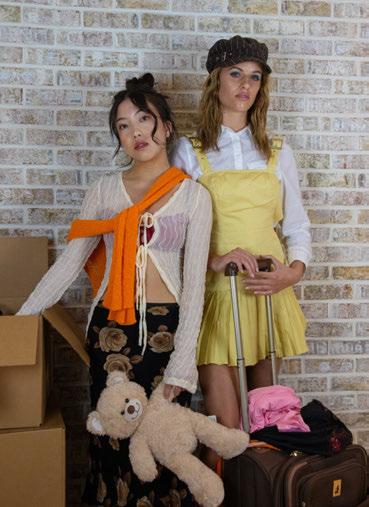


It is important to never stop believing in yourself because your future needs you. Our futures need us.
Glam:
Photo:
Words:
Models: Kathleen Yang, Ella Zielke
Spread Designer: Nia Kalinovic




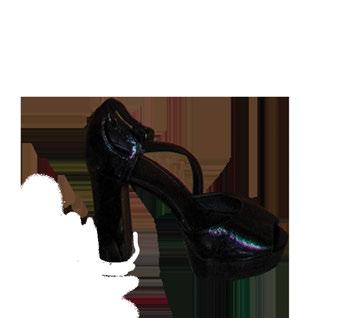
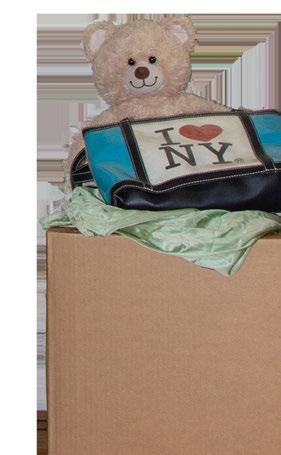
 Style: Gracie Sink
Madison Girodat, Lilly Pilat
Kimberly Sy, Olivia Jordahl
Gracie Sink
Style: Gracie Sink
Madison Girodat, Lilly Pilat
Kimberly Sy, Olivia Jordahl
Gracie Sink


Believed to originate from the circus in the 1900s, the term “the show must go on,” was used to boost a performer’s morale when things didn’t go well. However, this term can be applied to more than just theater – it can apply to life as well. Losing a job, going through a breakup or ending a long time friendship can feel devastating. It can feel like there is no light at the end of the tunnel. Those feelings are totally valid, but at the end of the day, your show must go on. Regardless of what happens, your personal goals and growth cannot come to an end. And, like in showbiz, there is a sense of obligation attachedt to this sentiment. No matter how down life gets you, it is important to still show up for yourself and others.
 Style: Gracie Sink, Isabelle Chauny Atienza
Glam: Emma White
Photo: Alexis Schmidt, Maya Kolton
Words: Gracie Sink, Caesar Roundtree
Models: Sofia Greco
Style: Gracie Sink, Isabelle Chauny Atienza
Glam: Emma White
Photo: Alexis Schmidt, Maya Kolton
Words: Gracie Sink, Caesar Roundtree
Models: Sofia Greco

Whether it’s friendship or a romantic relationship, sometimes good things come to an end and it can be challenging to imagine a new beginning. When trying to start these new beginnings, start small. When things come to an end, the first course of action you take does not have to be as large as starting a new relationship, or getting up and pretending nothing happened.
There are little things you can do to get back on track – the most important being finding simple pleasures in everyday life. Things as simple as the warm sun, making a friend laugh, or getting your favorite coffee. Additionally, responsibilities like going to class, going to work and being present are also important to healing, despite life’s ongoing changes. Small moments of joy start to get bigger the more they are celebrated and valued.
While it can be tempting to succumb to despair and give up, it is important to grow through adversity and navigate endings with kindness and patience towards yourself. Moving on from tragedies doesn’t have to mean erasing your pain or forgetting about it. It’s about the way you acknowledge your emotions and how you gather the courage to keep going. The best thing to discover in life is your own resilience.
In our show called “life,” each of us has a unique role to play that fits our script. Our life may be scripted with moments of joy, drama, and fear. Characters may come and go along the way, but no matter what, the show must go on.
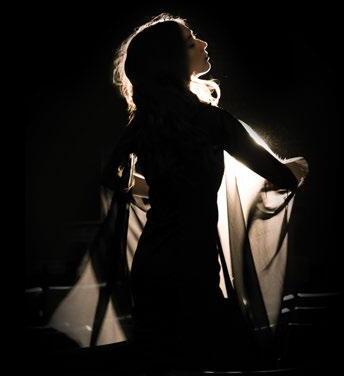






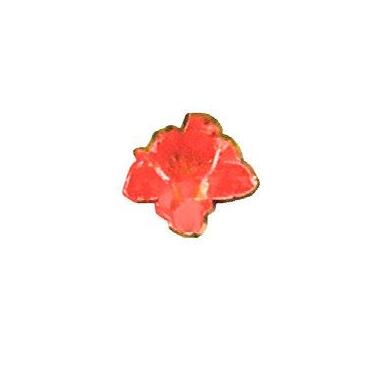

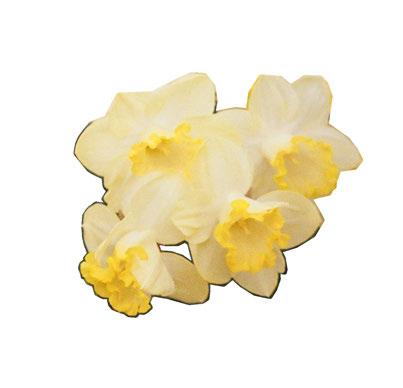




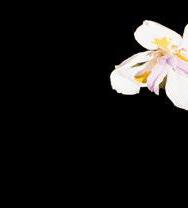







 Glam: Evan Yalowitz, Madison Girodat, Lauren Davis
Photo: Natalie Vezina, Trina Fiebig
Models: Ty Smith, Jenna Jenkins, Paige Harvey
Glam: Evan Yalowitz, Madison Girodat, Lauren Davis
Photo: Natalie Vezina, Trina Fiebig
Models: Ty Smith, Jenna Jenkins, Paige Harvey



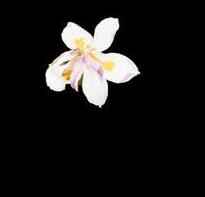















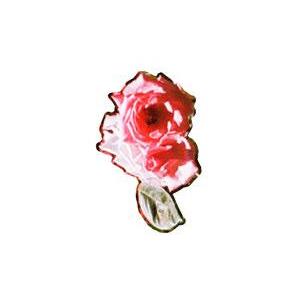



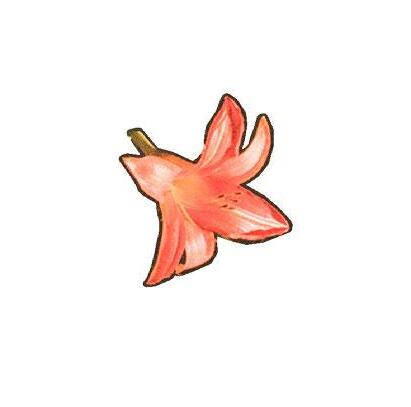







Golden-blonde feathered hair, patchwork bell bottoms, and sky high platforms are all icons of the 1970s, but under the glimmering facade of a colorful decade of amusement lies the story of Americans living through recession. In a time of economic decline for many struggling American families, life felt increasingly desolate. Entertainment options were scarce, and affordable options were prized. The bowling alley was an escape. Where else could a family find dinner, entertainment and exercise all at the same time? Teenagers went on dates, middle-aged men formed bowling leagues, after school groups formed, and the bowling industry boomed. The bowling alley became a third space – a place for community and camaraderie.
Young adults in the 1970s felt the recession’s impact the hardest. Historically, entering adulthood and trying to find a house or job has never been an easy task, but attempting to begin a life while struggling to survive added a layer of difficulty. Money was reserved for the necessities, so when it came time for fashion, people got creative. DIY culture was on the rise – and patchwork vests and bell bottoms with self added embellishments were all the rage.

When the economy began to bounce back, we lost some of the individuality that came with the need to customize. Ready-to-wear looks and mass production took over. Some of the same trends popularized in the 70s out of necessity are beginning to come back for a similar reason. With the rising
cost of living, and the expenses associated with college and young adulthood, DIY culture is back on the rise.
The idea of an industry rising from the ashes of an impoverished nation acted as a continuation of the American Dream. The success of the local bowl-
ing alley proved that you could still hope to make it far in life with nothing but an idea. With DIY trends circling back, society must look to previous resources and challenge creative ideas.
Will we strike out? Or will we strike gold?
srike out? Or will we srik Will we srike out? Or will we srike gold?


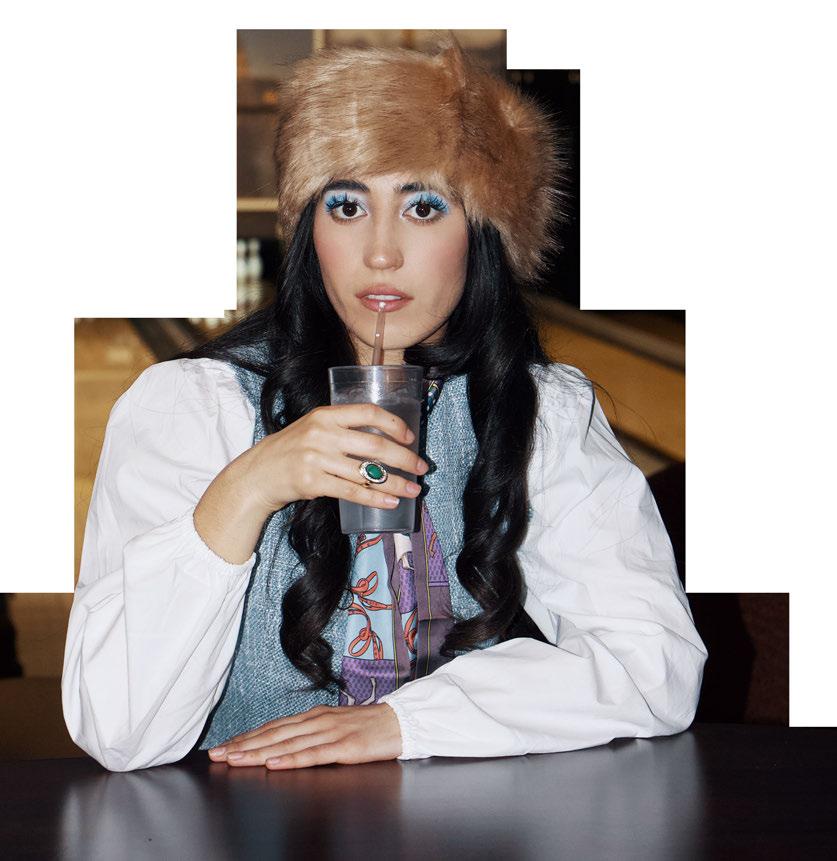



Style: Lily Stroup, Michael Barfield
Girodat
Words:
Models: Ashley Grifka, Dakarai Young, Sasha Rauth
Spread Designers: Marissa Malleck, Harrison Sanders




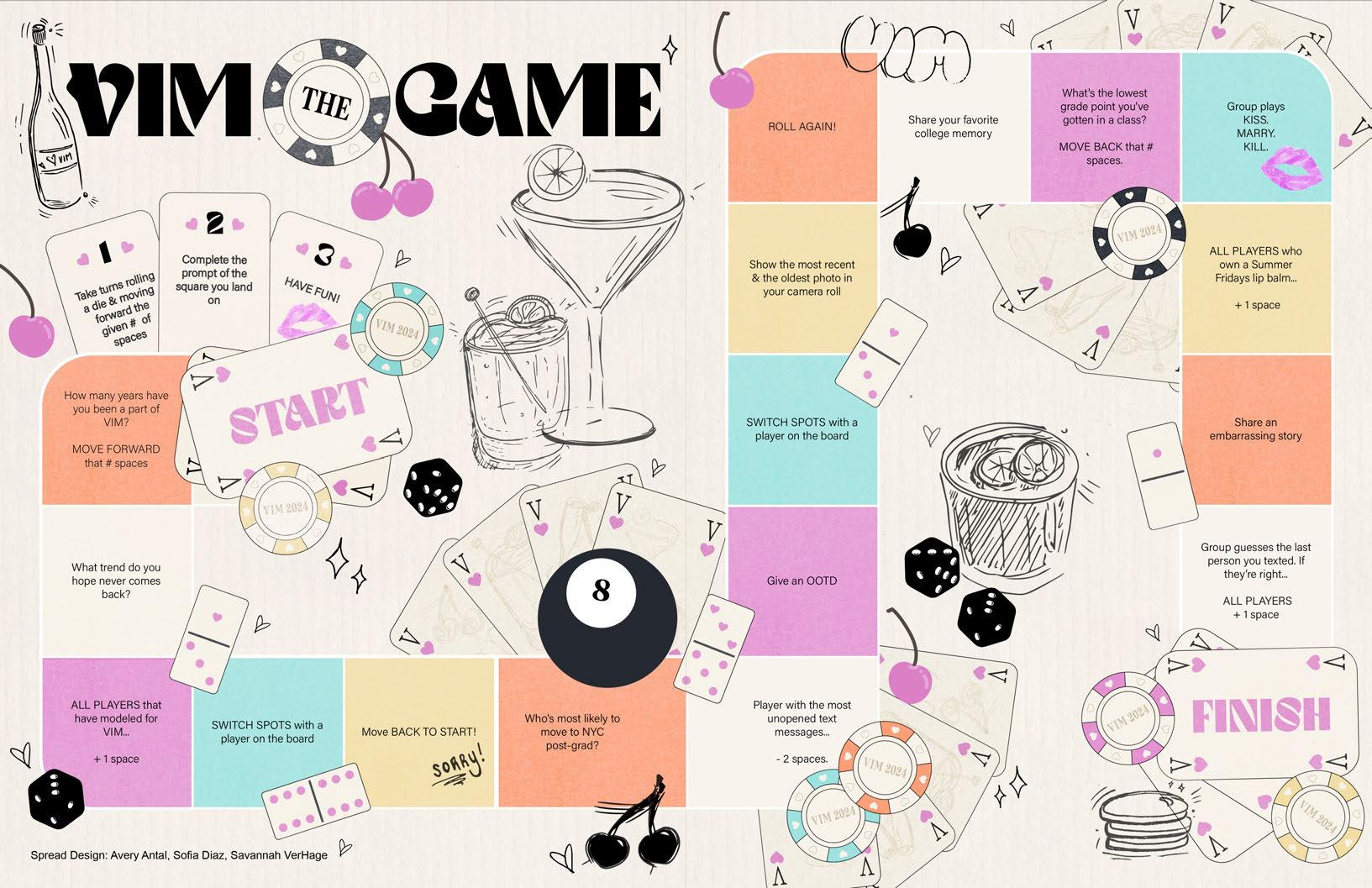

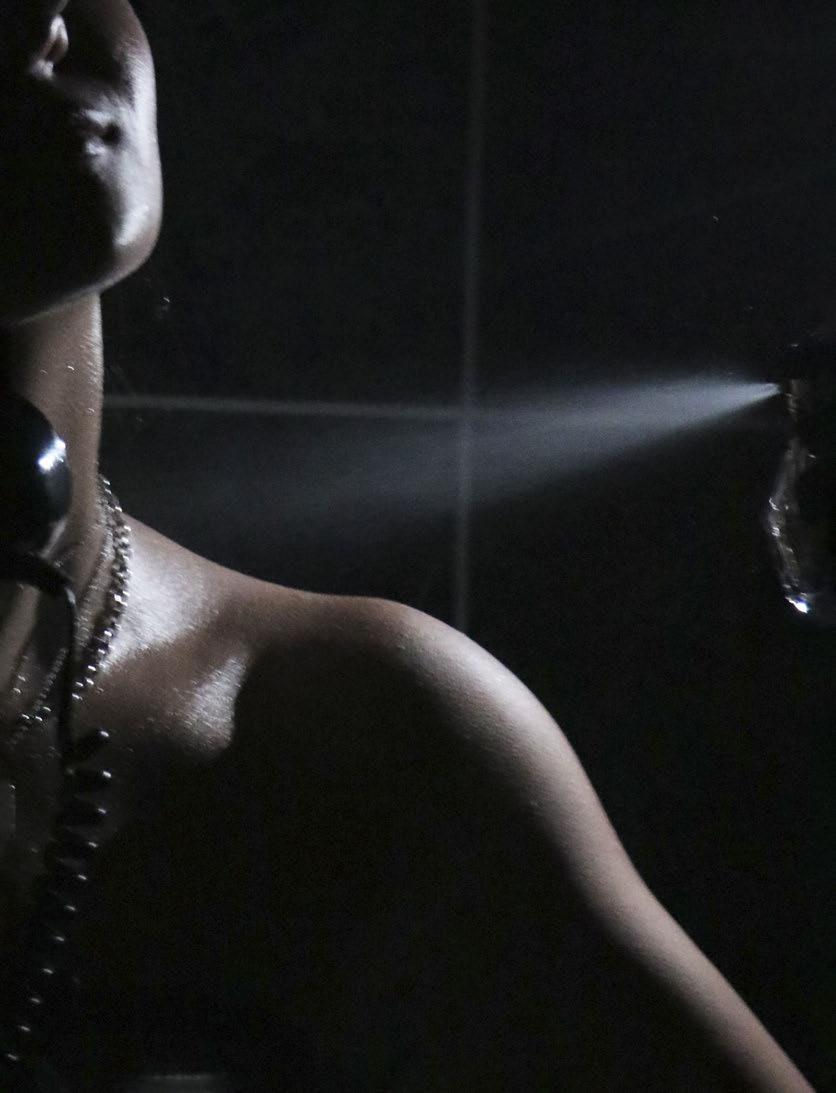
Perfume’s Power to Preserve the Past in Every Drop

Throughouta lifetime, certain scents serve as keys with the potential to unlock the doors to cherished memories. A power that transcends both time and space. A power that connects past and present. That is the power of scent.
Perfume acts as a vehicle of transportation to a certain time, memory or place in life. It stands as the biggest key to remembering the past–good or bad– and holds the power of emotions and experiences.
Fragrance not only brings back memories of certain places, but can also be reminiscent of people. It can bring back the smell of a loved one,acting as a form of connection with them. Scent serves as a bridge between the past and present, keeping cherished memories

and people alive. When greeted with an old scent, prepare to be taken back to a 16th birthday party, a favorite family vacation or even that breakup. Perfume acts as a silent narrator of identity, following the association of certain scents with loved ones, places and even distinct periods in life. A whiff of a familiar fragrance is like transportation through time, triggering memories and feelings of nostalgia. Each perfume bottle becomes a unique time capsule.
When shooting Essence of Eternity, VIM had the pleasure of working with The Graduate Hotel. Lee Cote, the hotel’s manager, expressed a similar journey involving the use of fragrance to enhance guest experiences. The Graduate
partnered with Ranger Station, a small luxury brand working with social enterprises to create high-end fragrance products.
As a company, they value the power of scent and believe that it has the ability to elevate the perceived world. Their products are designed to help create (and remember) memories that function as the currency of life. When partnering with The Graduate, their new Ranger

Station candle collab celebrated the idea of “newstalgia” – the experience of making new memories that feel just as good as the old ones.
Perfume’s ability to unlock memories is nothing short of extraordinary. Fragrances allow a reliving of moments of love and nostalgia by connecting sensory experience to the past.

Style: Ashley Grifka
Glam: Emma White, Alison Baumgartner
Photo: Megan Basile, Trina Fiebig
Words: Ashley Grifka
Models: Lana Nehme
Spread Designer: Hayden Miller
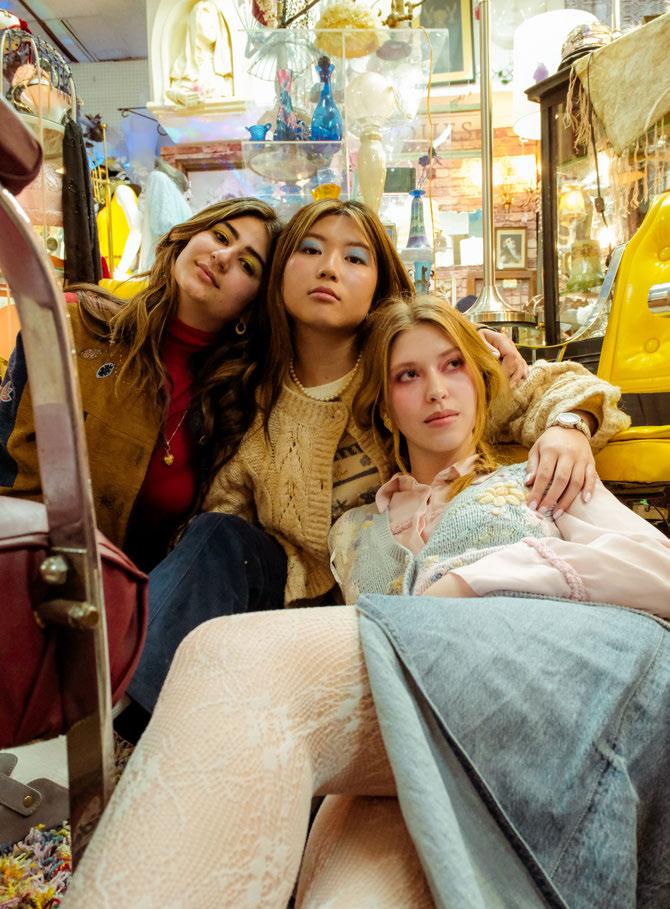

This season, it’s out with the old and in with the…well, old. For too long, pre-loved garments faced an undeserved bad rap.
Remember Regina George’s iconic,
line from “Mean Girls”? Of course, the pink-clad bombshell was entirely facetious about her admiration for an ‘80s hand-me-down skirt, but contemporary It Girls certainly wouldn’t be as flippant over such a garment.
Given the rise of trends that value thrifting and an increased prioritization for sustainable clothing practices, as well as celebrity stylists’ recent adoration for pulling archival designer looks for the red carpet, it seems that vintage is the new in.
“Thanks, it’s thrifted,” may be today’s coveted response to any clothing compliment, but before hitting local thrift stores or consignment shops, consider what may be overlooked: vintage, unique, sentimental within every residence — or perhaps just a phone call away. Heirlooms.

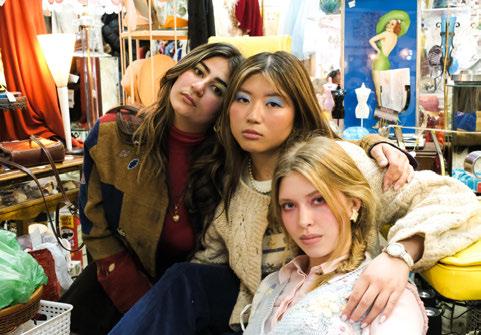
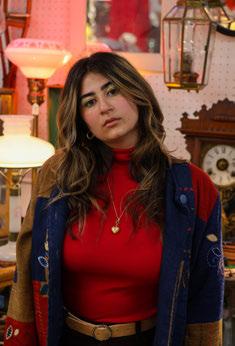
The days of solely eclectic, often unwearable pieces like brooches, cufflinks, pocket squares and wedding gowns are long gone. Now, heirlooms consist of dads’ ‘90s band tees, mom’s trendy-again low-waisted jeans, grandma’s ultra-chic fur coat, grandpa’s perfectly oversized worn-in leather jacket. The cyclical nature of trends prompts fashion lovers to dig pieces out of dusty boxes in the attic in order to give them a new life. Rather than just playing into trend cycles, rescuing these garments revitalizes the memories associated with them, each vintage article carrying fragments of their past as it is made new again.
Wearing these pieces is a slip into the shoes (or shirt, or pants) of loved ones, marrying past wit h present in homage to the lives of those who shaped Gen Z, exploring a faraway version of them that may only otherwise be met through yellowed pictures and retold stories. When these heirlooms are passed on again, memories still in the making, may the next generation of fashion admirers be lucky enough to continue the lifecycle of each timeless treasure.
Glam: Analise Krawczuk, Autumn Decker
Photo: Megan Basile, Maya Kolton
Words: Justice Seay
Models: Grace Lowell, Krysteen Nguyen, Meghan Valade
Spread Designer: Morgan Tschetter
Style: Maggie Scheff, Ava Fawcett, Tessa Woolever

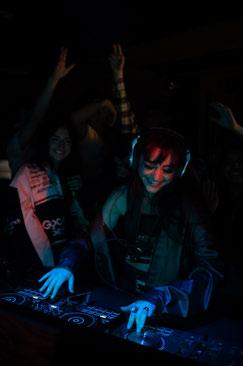
The world is filled with noise, making us constantly crave rhythms and melodies in everyday life. We search for structure in beats and basslines that match our own thoughts and feelings. One music genre that stands out amongst the rest, taking our generation by storm, is called Electronic Dance Music (EDM). These tracks include a large dynamic change towards the middle of the track, creating a ‘build up’ to a sudden increase or decrease in intensity – bringing a new energy to the crowd. Since emerging in the 1970s, EDM has continued to push boundaries and expand musical limits – creating a whole culture and lifestyle and a multitude of sub-genres along the way (house, techno, and dubstep just to name a few).
But why does this genre resonate with listeners without even having words at times? When listening


to music, our brains release dopamine hormones – our neurotransmitter that triggers happiness and well-being, emitting a positive and rewarding sensation. Adding specific beats or sounds to a track will change our physiological moods through heart rate, respiration, and electrodermal activity (electrodermal measures emotional response). DJs focus not only on an intense auditory response, but also on strong visual stimuli to lure in audiences. The most common response is the desire to dance and move to the beat of the song to truly ‘feel’ the rhythm and musical undertones.
Not only does the music introduce new intensity and unpredictability to our physiological responses, but also our sense of community and comfortability. The PLUR Movement, which stands for peace, love, unity, and respect is the foundation for EDM that ravers and on-lookers alike follow; it can be seen through trading and creating bracelets (kandi), respecting boundaries and opinions, as well as safety. PLUR has become a way of life for many, and continues to promote inclusivity and create a safe environment that encourages people to truly be themselves. It is a way for people to disconnect from the world around them, even if only for two or three minutes.
EDM might not be for everyone, but it has influential roots that drive both individuals and communities together, uniting them as one in an emotional and physical tempo.
VIM would like to thank Landshark Bar & Grille in East Lansing for the use of their space and assistance with the photoshoot.
Style: Lane Pruban Glam: Emily Burke Photo: Megan Basile, Andrew Li Words: Lane Pruban




An idea is the seed of any remarkable success. While most ideas stick to the back of our minds, some become the change we want to see in the world around us. For many, this looks like a new piece of tech or a couple more dollars in your bank account. For Spartan Tutors, it looks like someone else’s aced exam, finished project, and an acceptance letter.
Spartan Tutors started in the same classroom our current students are sitting in now. Christian Shaman had big dreams to get into the Eli Broad College of Business at the beginning of his sophomore year. The biggest hurdle most expectant students must overcome is the dreaded prerequisites like CSE 102. Christian had already learned how to code in high school, and what better way for a first-year student to make friends than to let them pick your brain? He started tutoring by himself for a year, then realized the demand for tutoring was too much for one person to handle. During the winter break of his sophomore year, Christian had an idea for
how to handle it.
Just like that, the right people came at the right time to help build out the vision that Christian originally had. Starting remotely and then expanding into a close-knit group of friends who all happened to have the same unique passions, Spartan Tutors became more than coding and twohour-long sessions. It became friendly faces that people could not only learn from but relate and connect to.
The real inspiration came from Christian’s brother, Dylan Shaman, who had been building websites since eighth grade and naturally has a business-driven mind. Seeing what Dylan did for years, getting people to engage with his content, and having his own driven goals, Christian wanted to do the same. With Dylan’s help, Christian learned to design and build websites. When asked how he and his brother developed the passion for wanting to chase their dreams, Christian said, “All credit goes to our parents and grandparents.”
When Christian initially started
this idea, the tutoring process was hectic: texting students to check their availability, then texting tutors to check their schedules, and reevaluating several times before finding a time that worked. Leonardo Suguimoto Specht was one of the initial tutors that Christian had been texting to set up sessions with. They had been texting for an entire semester but had never seen each other’s faces until months after they had been in communication. This is when Leo and Christian’s working relationship started serendipitously.
A phone call led to the two of them realizing they were in the same class throughout the months they had been texting each other. There were times they were texting each othewhile in the class, not realizing they were in the same classroom. After they realized this, they began spending more time together, and their vision aligned. Leo had been wanting to put his newfound coding skills to use for something that could help others. In one summer, Leo learned to code in Swift and built the first version
Christian Shamanof the Spartan Tutors mobile app. Leo’s new app automated the entire tutor scheduling process for Spartan Tutors and allowed Christian to focus on marketing the service rather than facilitating it. This is when Spartan Tutors really got up and running. Since that first application, Leo has constantly been improving the app, adding new features, and making it a cross-platform application. To this day, Leo handles everything related to tech for Spartan Tutors. If you have ever booked a session with them, it was on the software Leo created.
With this, since the Fall of 2022, Spartan Tutors has expanded to 100+ tutors, worked with 500+ students, and hosted over 1,000 sessions. Two of the tutors, Fabrizio and Gable, are just the tip of the iceberg of the whole company. Gable was Christian’s friend since preschool. When asked if he could help with the project, Gable
 Gable Sundman
Gable Sundman
immediately said yes and was excited to help his friend grow something impactful. Christian could not be more thankful that his lifelong friend was able to help him with his business.
Christian and Fabrizio
Vazquez were connected by their mutual friend Emma Williams, Christian’s first-ever student. Fabrizio majors in finance with a minor in computer science. This unique combination allowed him to have the communication skills of a business student and the technical skills of a computer science student, the perfect mix for a coding tutor. Christian mentioned how easy it was to work with Fabrizio and how well their working relationship went throughout the process. Fabrizio always received excellent reviews from students, similar to many of the other tutors. Fabrizio is unique in that he has always had a deep interest in the

business and provided incredible ideas on how to improve it, something that not only helped the business, but also the experience of the students who came in contact with it.
While there are too many names to list, the tutors are the heart of the company. Prior to the creation of Spartan Tutors, the primary method of finding a tutor on campus was through luck of finding a flier that a tutor put up or scrolling endlessly on Facebook. With the creation of the company, students had the opportunity to receive tutoring anytime they wanted with just a few clicks.
On the other hand, Spartan Tutors allows students who have previously excelled in their courses to become teachers, an experience that not only helps them in the real world but also looks great on a resume.
“The creation of a thousand forests is in one acorn.” - Ralph Waldo Emerson.
A small idea led to a grand change in the tutoring landscape at MSU. If you have a small idea, chase it... It might just be worth it.
Written by Natalie Alexander Fabrizio Vaquez
Fabrizio Vaquez
